Overview
Our handy Where to eat guides are big help when deciding on the right restaurant for dinner. Naturally, the next obvious question is what to order. Forewarned is forearmed as they say – let us take you on a Funchal Food Tour and introduce you to the cuisine, culture and islander lifestyle of Madeira.
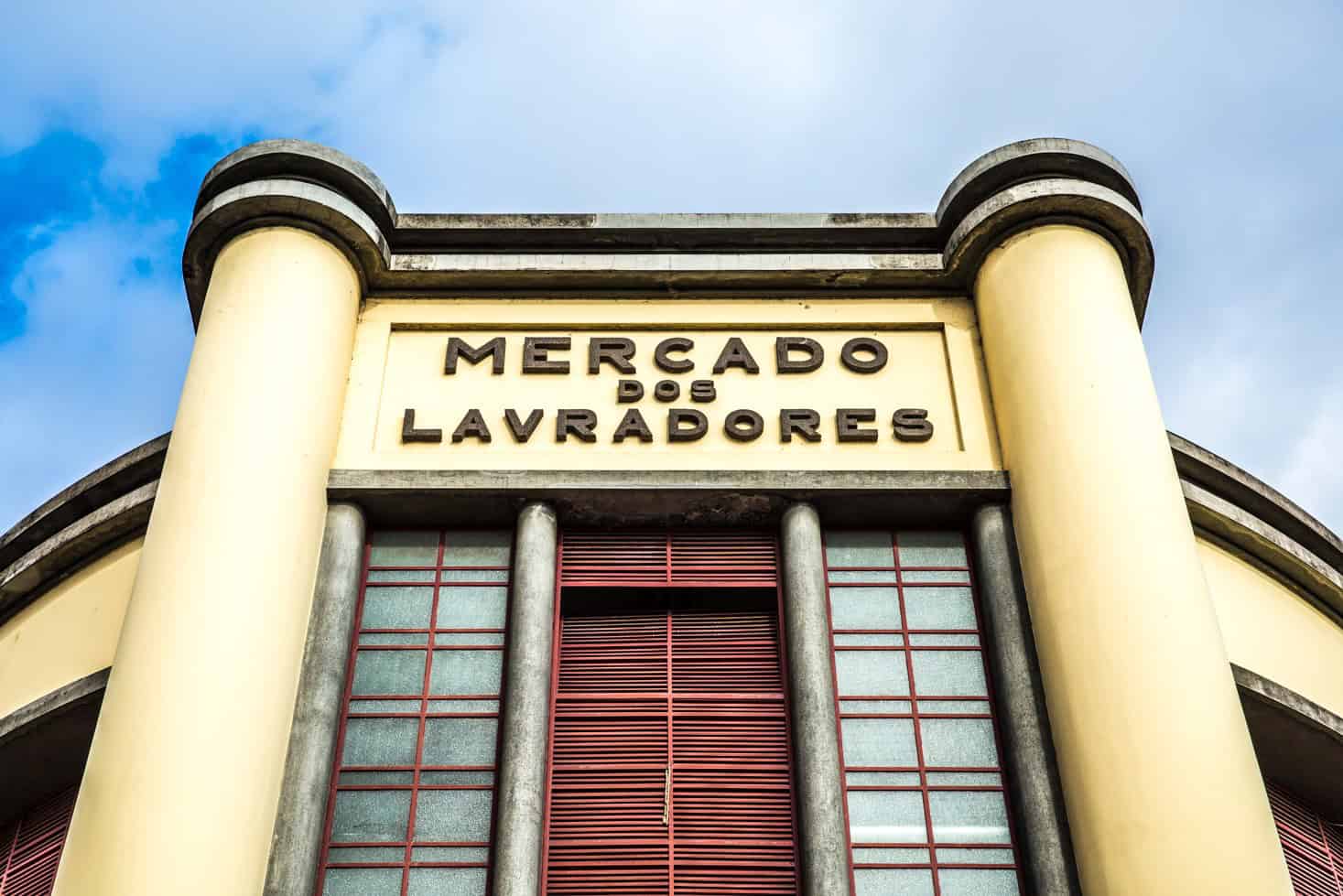 Following the establishment of their first settlements in the 1420s, the Portuguese immediately recognised the economic and agricultural potential of their new Atlantic outpost. Whilst farmers eked out a living across the Alentejo region, historically the breadbasket of mainland Portugal, Madeira’s first settlers found their rich fertile soil and abundant supplies of water allowed them to grow more cereals, wheat and (most significantly for the Portuguese economy) sugar cane than they’d ever dreamed possible.
Following the establishment of their first settlements in the 1420s, the Portuguese immediately recognised the economic and agricultural potential of their new Atlantic outpost. Whilst farmers eked out a living across the Alentejo region, historically the breadbasket of mainland Portugal, Madeira’s first settlers found their rich fertile soil and abundant supplies of water allowed them to grow more cereals, wheat and (most significantly for the Portuguese economy) sugar cane than they’d ever dreamed possible.
The Mercado dos Lavradores farmers’ market is the foodie centre of the city. It opened it’s doors to the public on 24th November 1940, and from the outside, you could mistake it’s modernist architecture for an art deco London tube station, were it not for the blue azulejo tiles bordering the main entrance. Inside fruit, fish and flowers dominate – unlike mainland Portugal, Madeira’s sub-tropical climate allows local farmers to grow a diverse range of exotic fruits and vegetables.
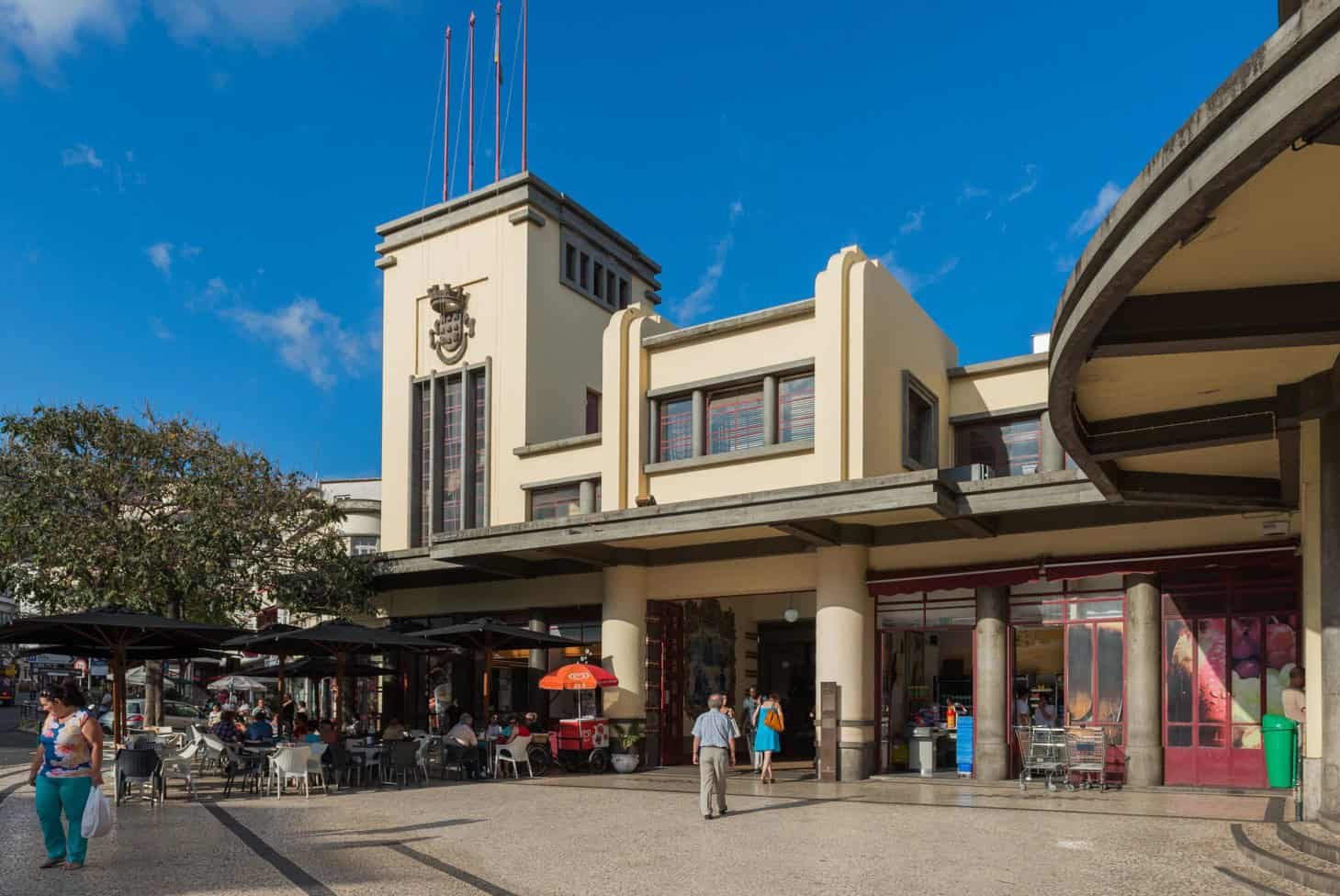
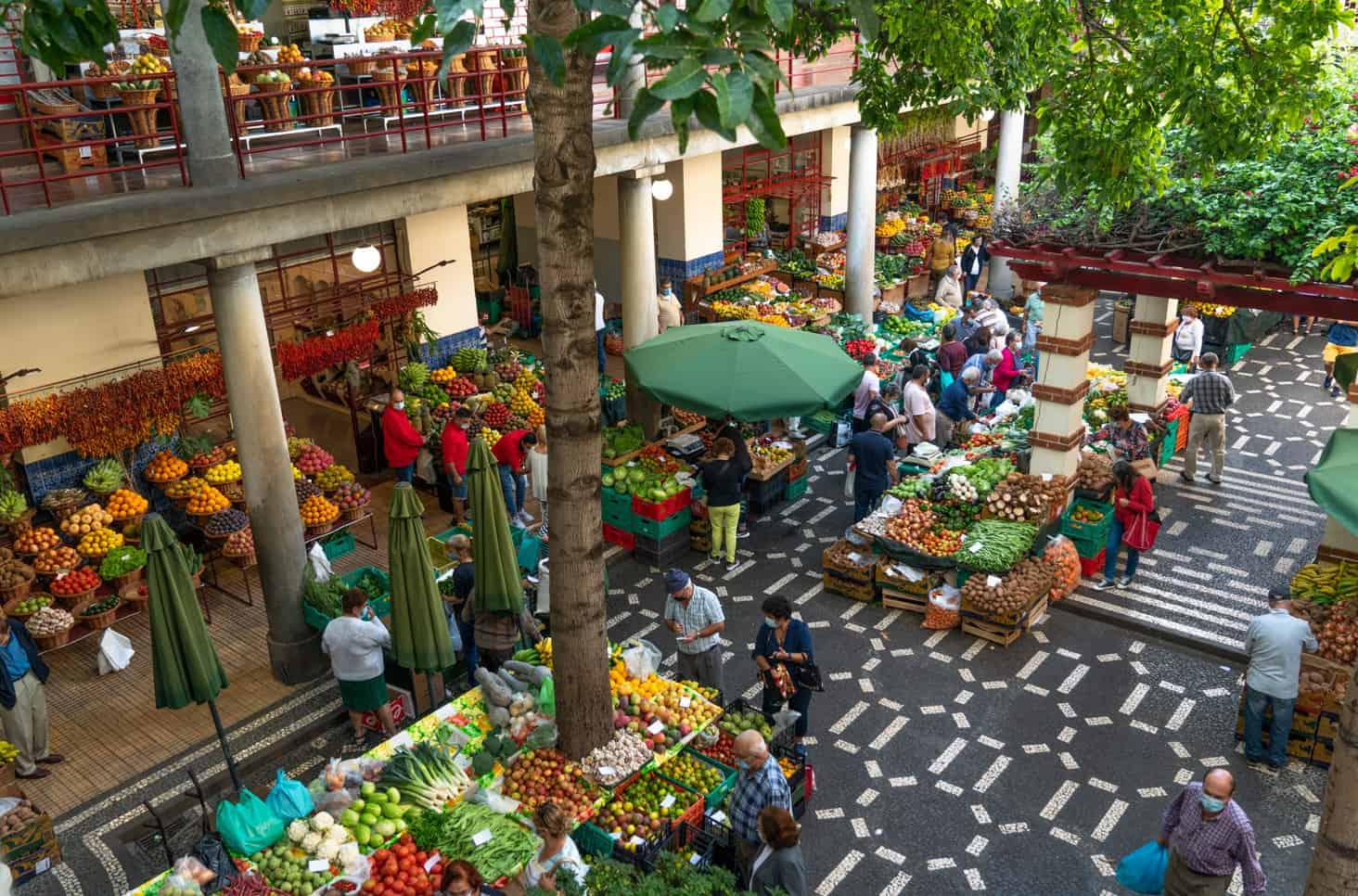 Bananas thrive, and as you begin to explore the island away from Funchal, you’ll see the steep hillsides of the south coast are covered in groves. Madeiran maracuja (passion fruit) comes in multiple varieties, right across the scale from sweet to sour. You’ll find maracuja-flavoured juices, jams and liqueurs on the supermarket shelves, and the fruits themselves are a popular ingredient in both sweet and savoury dishes. Figs, cherries, mangos, oranges, avocadoes, chestnuts and sweet potatoes are also grown with great success.
Bananas thrive, and as you begin to explore the island away from Funchal, you’ll see the steep hillsides of the south coast are covered in groves. Madeiran maracuja (passion fruit) comes in multiple varieties, right across the scale from sweet to sour. You’ll find maracuja-flavoured juices, jams and liqueurs on the supermarket shelves, and the fruits themselves are a popular ingredient in both sweet and savoury dishes. Figs, cherries, mangos, oranges, avocadoes, chestnuts and sweet potatoes are also grown with great success.
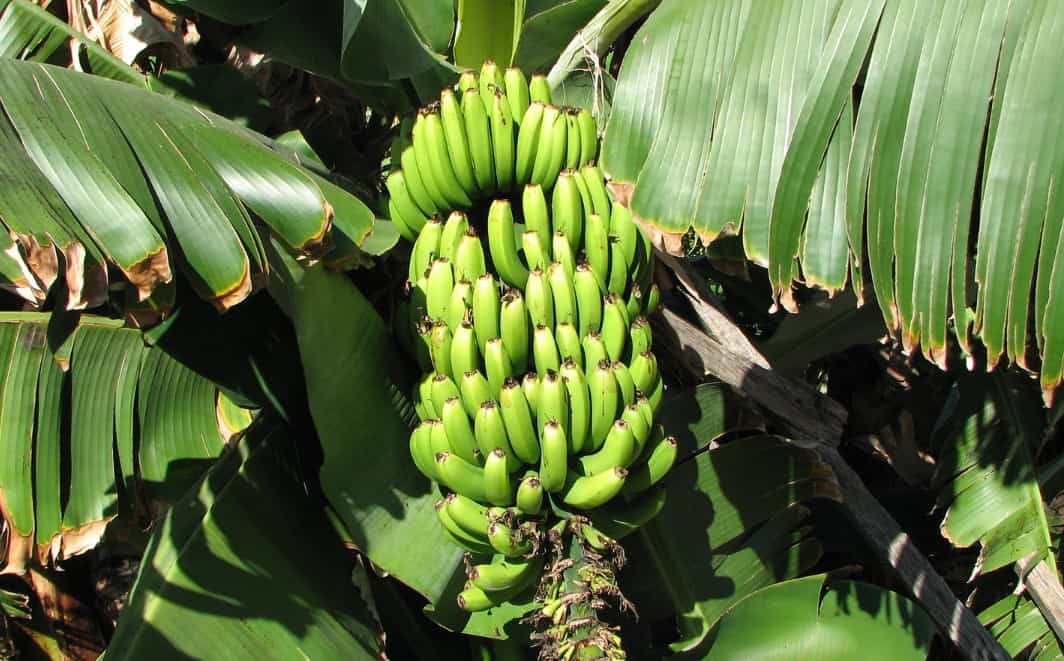
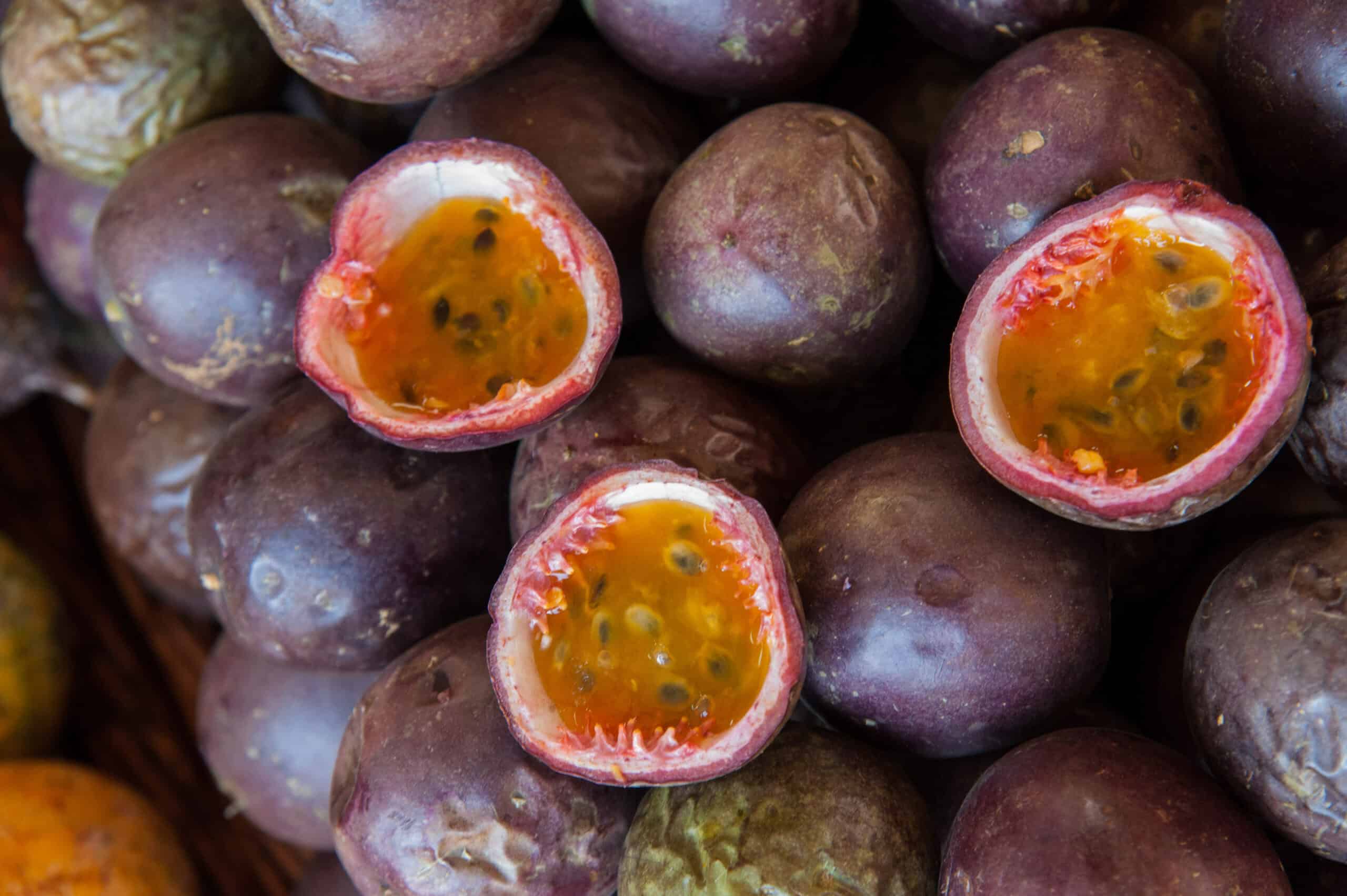 Less-familiar to many will be the annona – known here at home as a custard apple, which is a popular ingredient in Madeiran cheesecakes and ice creams (and often eaten as a desert in it’s own right). The monstera deliciosa, or swiss cheese fruit, looks like an elongated cousin of the annona but they’re not related. Swiss cheese fruit has a surprising flavour – somewhere between a banana and a pineapple. There’s also the small uveira da serra, which is endemic to Madeira and grows wild on the island’s high plains – where there’s laurisilva, you’ll usually find uveira. Being a member of the blueberry family, uveiras are not unlike bilberries here in the UK.
Less-familiar to many will be the annona – known here at home as a custard apple, which is a popular ingredient in Madeiran cheesecakes and ice creams (and often eaten as a desert in it’s own right). The monstera deliciosa, or swiss cheese fruit, looks like an elongated cousin of the annona but they’re not related. Swiss cheese fruit has a surprising flavour – somewhere between a banana and a pineapple. There’s also the small uveira da serra, which is endemic to Madeira and grows wild on the island’s high plains – where there’s laurisilva, you’ll usually find uveira. Being a member of the blueberry family, uveiras are not unlike bilberries here in the UK.
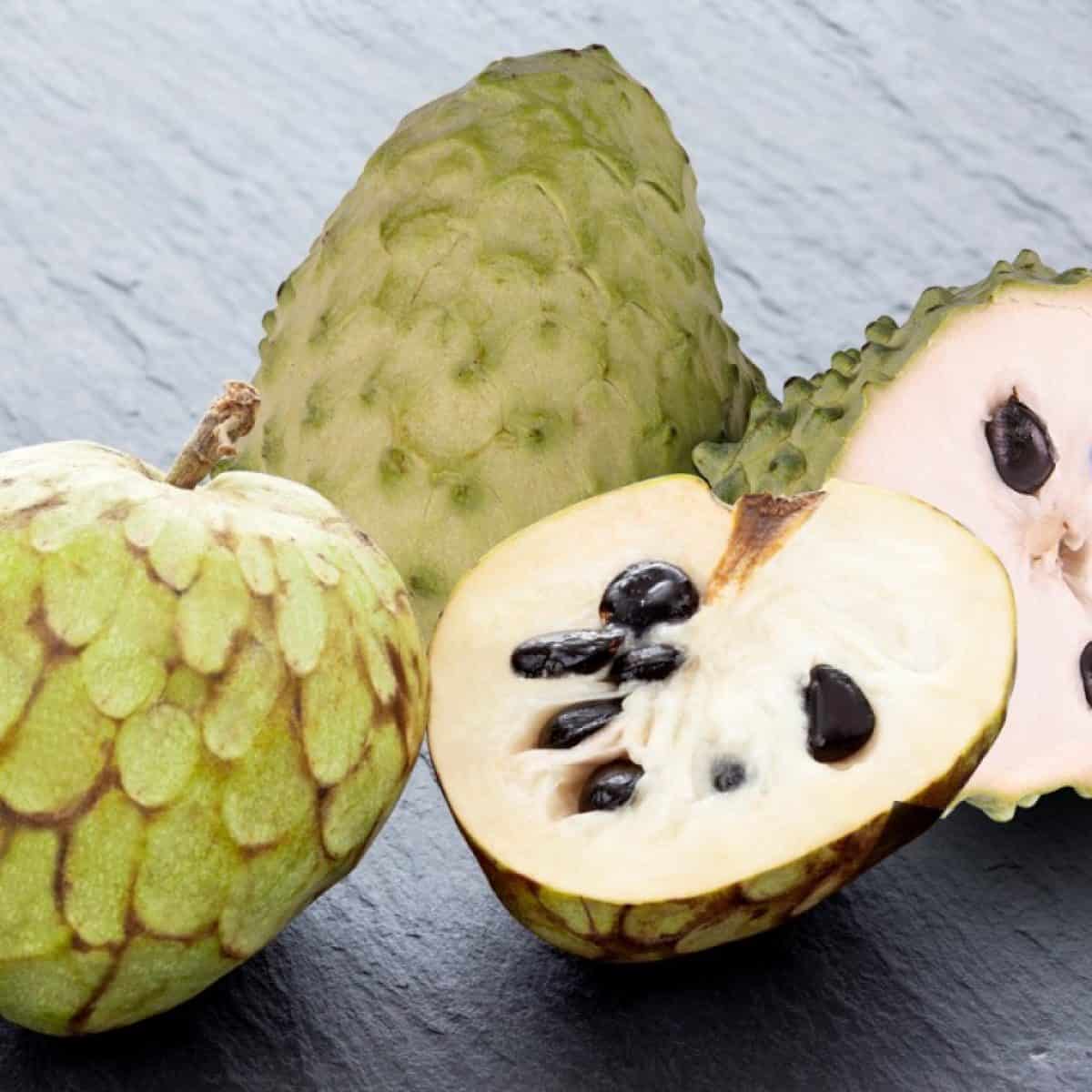
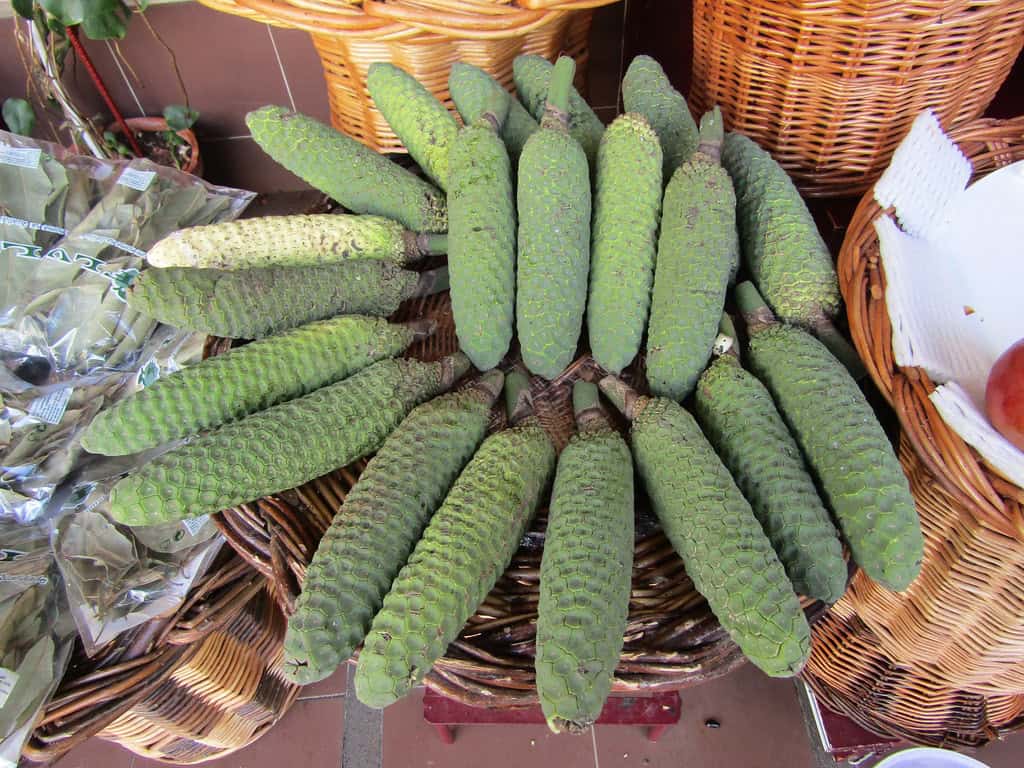
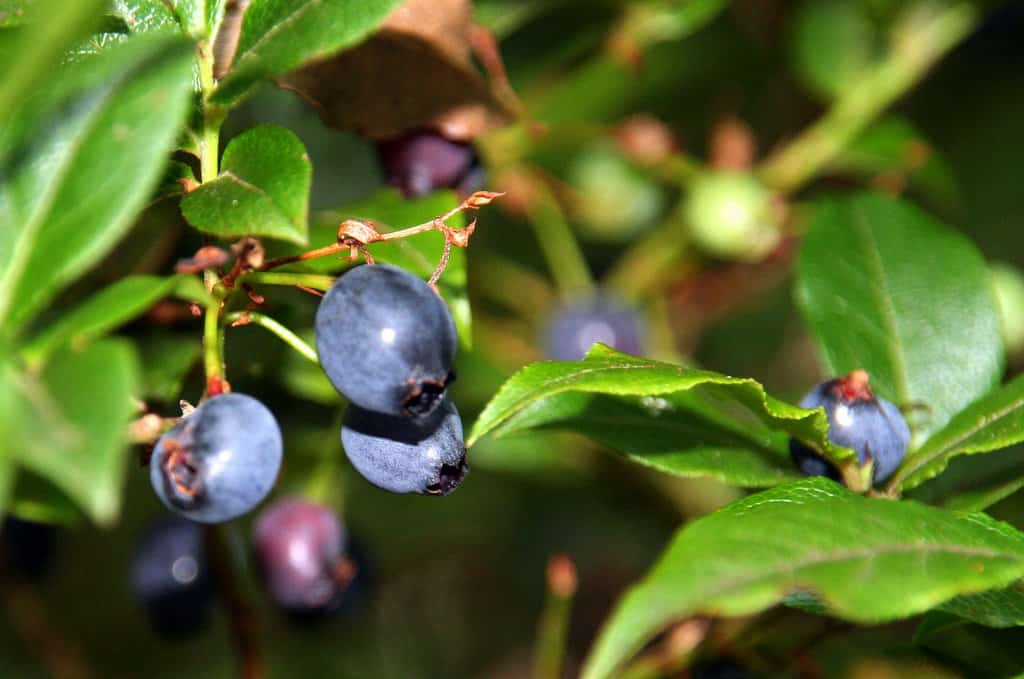
Moving from fruit to fish, (and many of the island’s most-popular dishes combine the two), your eyes can’t help but be drawn to the infamous espada, or black scabbard fish. There’s evidence to suggest Madeirans have been catching and eating espada since the first settlers arrived in the 15th century. It was a brave soul that first thought of eating one as it’s an incredibly unattractive species up-close. Don’t let that put you off – espada appear on most restaurant menus, combined with banana and passion fruit, and once cooked it’s a fish with a surprisingly delicate flavour.
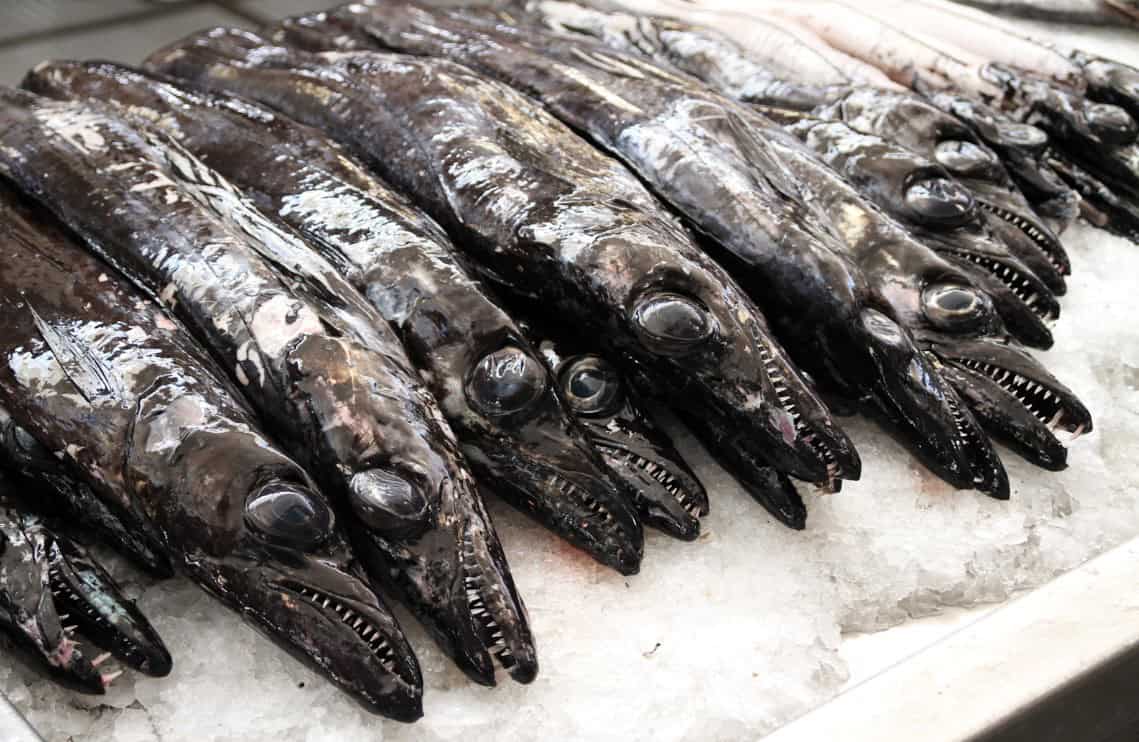
In terms of popularity, espada comes a close second to espetada. The similar spellings can be a little confusing, but espetada isn’t a fish – it’s a cooking method. Espetadas are skewers of meat or fish cooked over open coals, served on a hanging stand at your table. Espetada de Bife (beef) is the most-popular variation, where local bay laurel is used for the skewer and the beef is served with bolo do caco (a Madeiran flatbread), garlic butter and a side order of milho frito (fried maize). As a method of cooking, espetada has it’s roots in the religious festivals of the 1800s, when the main portions of laurel trees were used to construct shelters and gazebos for any food prep, and the cooks used the smaller branches as skewers when cooking by bonfire. The dish was extremely popular across the island’s restaurants in the 1950s – a victim of it’s own success, the laurel was over-farmed and the wooden skewers were replaced by iron. In recent times, the introduction of sustainable forestry methods has instigated a renaissance for ‘authentic’ laurel espetada.
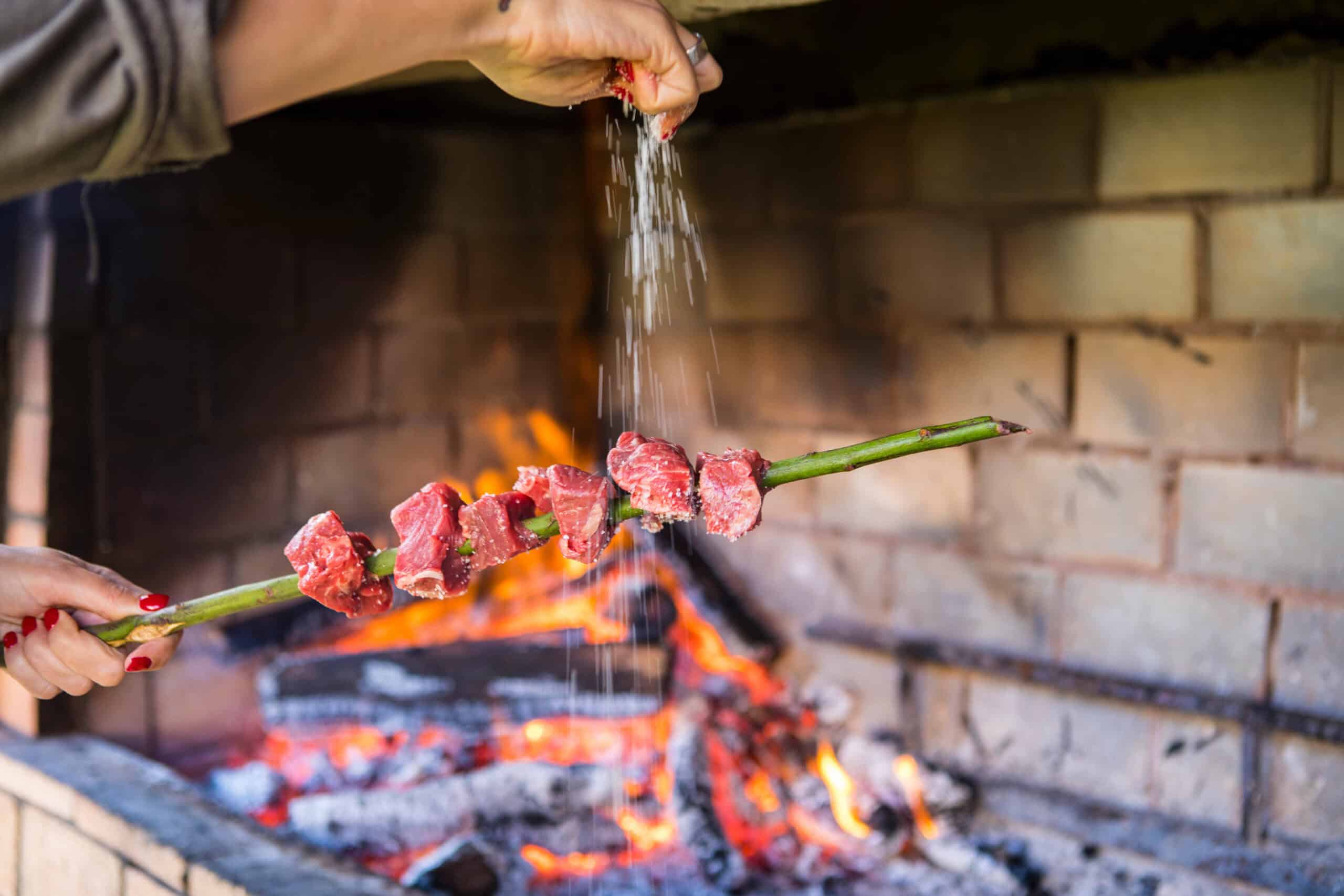
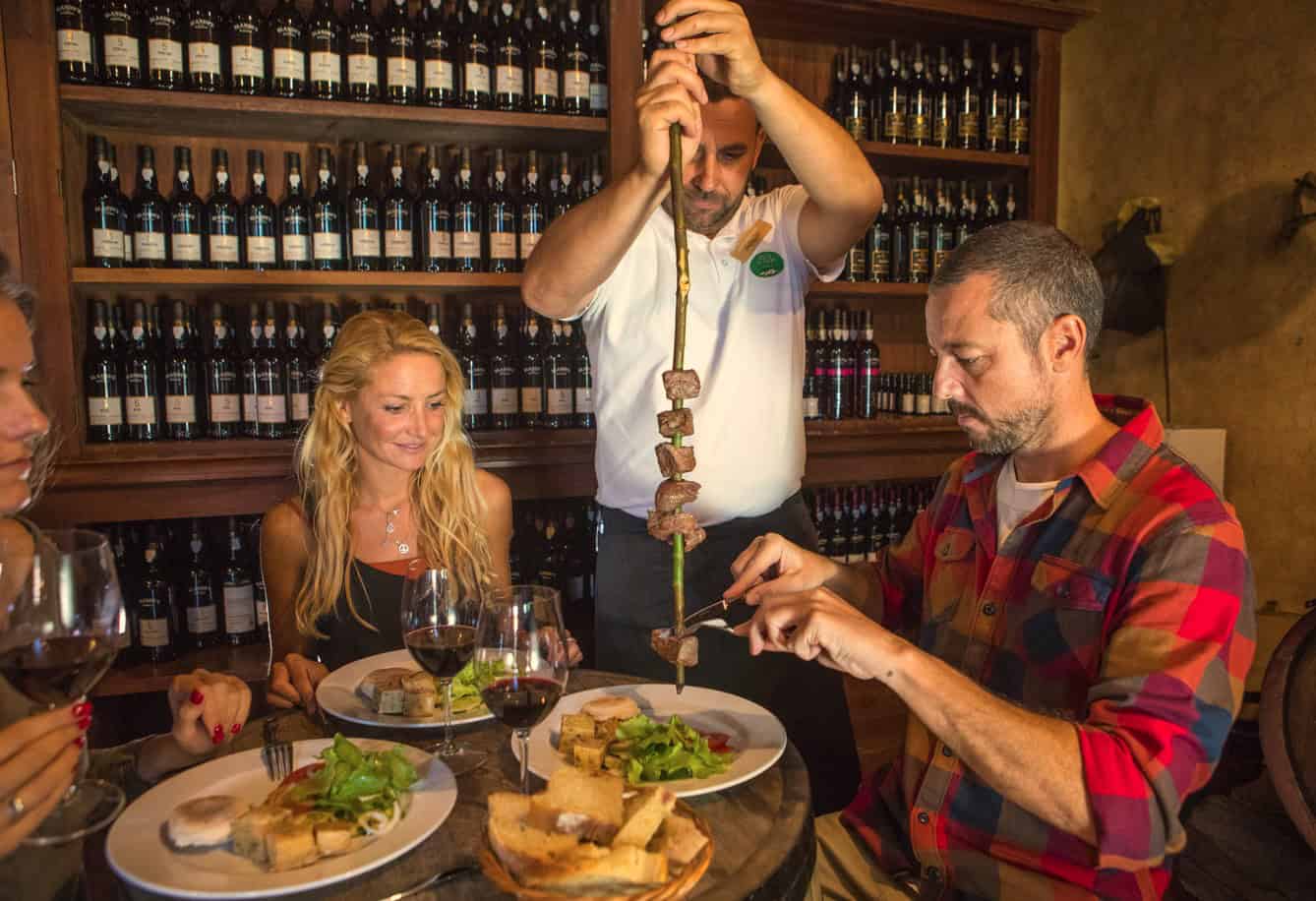
As a mid-Atlantic island, seafood tends to dominate most Madeiran menus. Together with the aforementioned black scabbard fish, you’ll also find polvo (octopus) in it’s many forms (grilhado, ensopada (stew) and polvo salade), bacalhau (salted cod), espadarte (swordfish), atum (tuna), salmonete (grilled red mullet), caldeirada de peixe (fish stew), cavalas (mackeral) and the notorious lapas, or limpets. Limpets are a classic example of a poor-man’s food, now elevated to a foodies’ favourite. They’re gastropods with a small, cone-shaped shell and can be found clamped to the rocky shoreline of the island. They’re usually cooked in a griddle pan over hot coals, with a generous helping of garlic butter and a slice of lemon – their taste is not-too-dissimilar to mussels. They’re also seasonal, from April to November, so avoid ordering them outside of this period as you’ll be eating the inferior frozen variety.
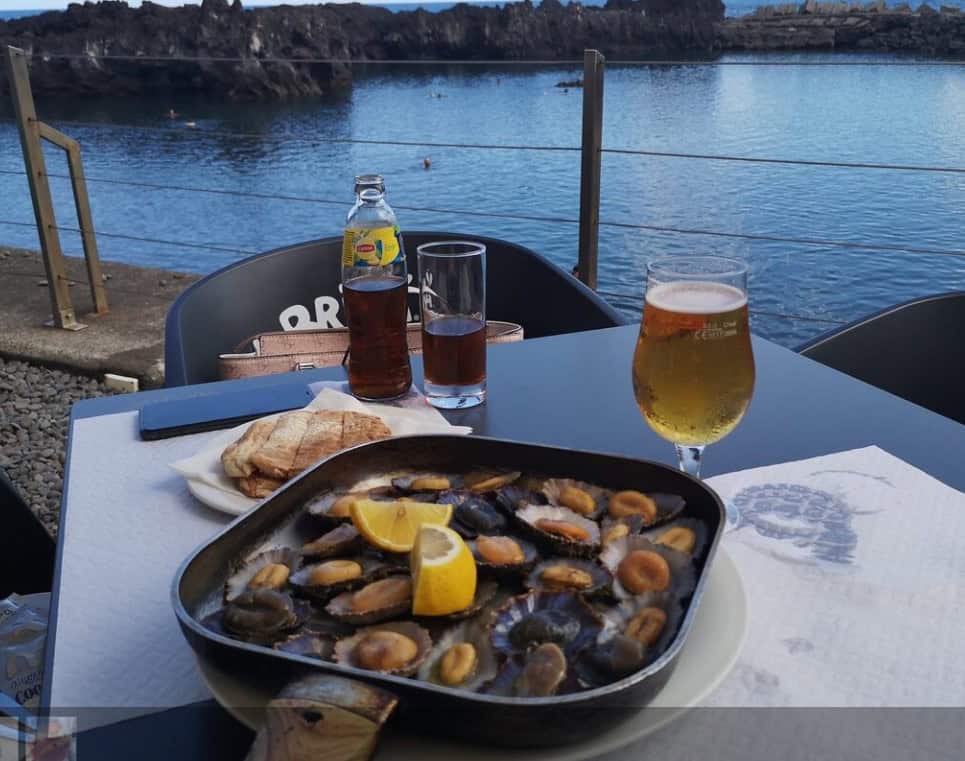
The classic Madeiran sandwich is the prego no bolo do caco – a steak sandwich with your choice of ham, cheese, egg and salad. It’s the bolo do caco flatbread that makes the sandwich – it’s almost a sourdough in taste, but sweet potato is added before proving. It sounds like it should be quite heavy, but it’s cooked on a heated stone rather than being baked in an oven, giving a crispy outside and soft inner. You’ll find a basket of bolo do caco offered as a starter to most meals, usually accompanied with a warm garlic butter.
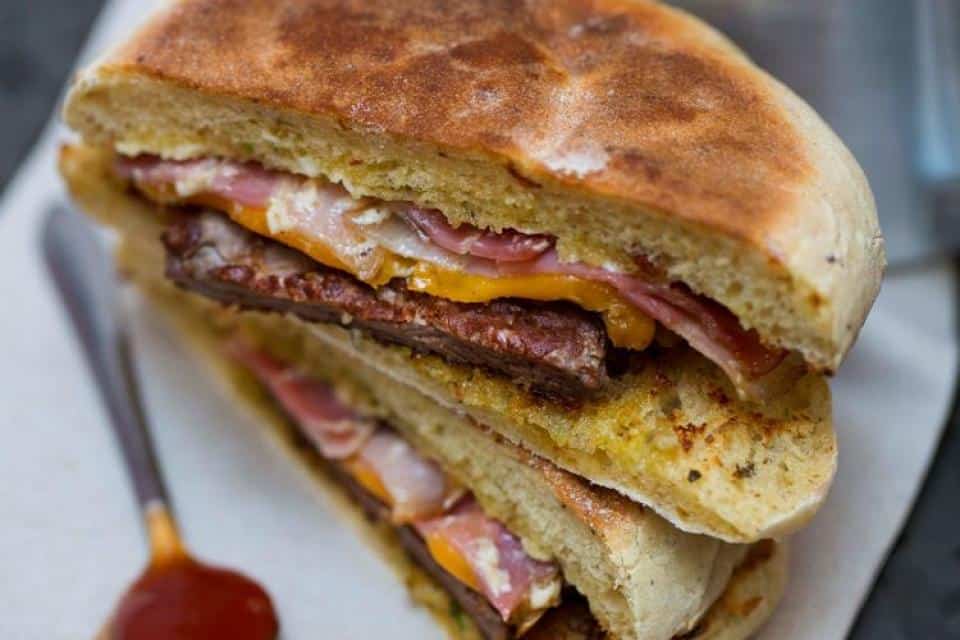
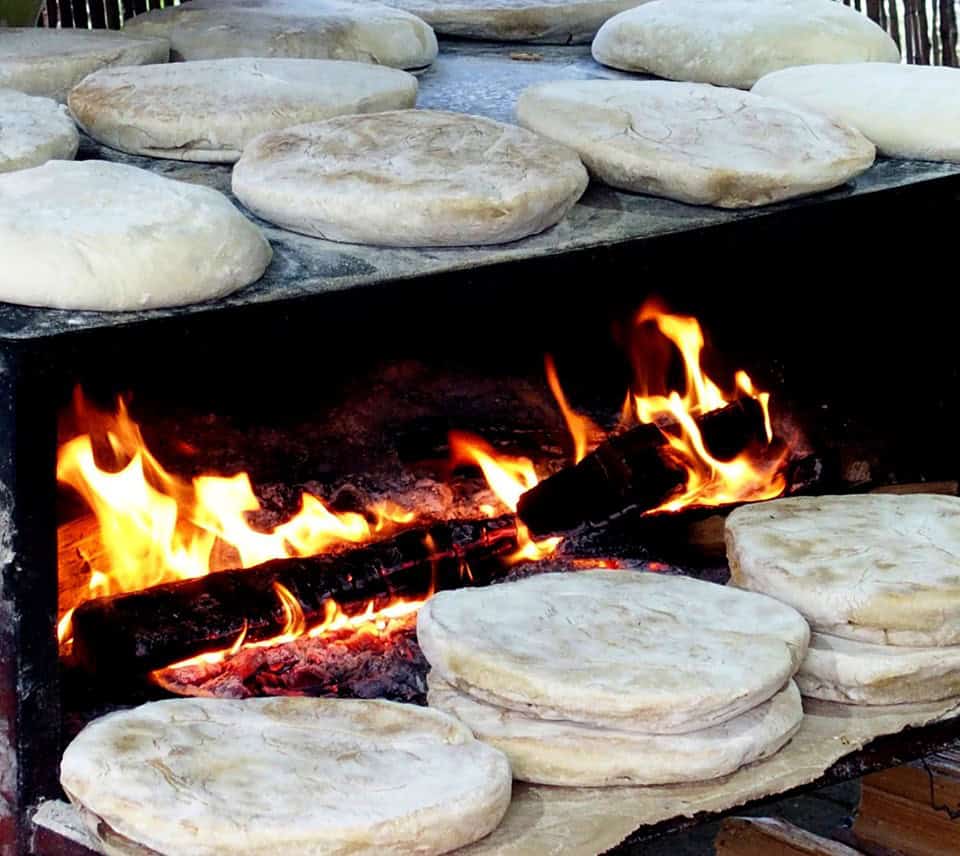
Freshly baked breads, pastries and cakes are an integral part of Madeiran life, thanks to the ubiquitous padaria. Padarias are to Portugal as patisseries are to France – you’re never far from a bakery and most business meetings, catch-ups with friends or mid-morning snacks involve coffee and cake at a padaria. In Paris, you might be ordering a jambon buerre – in Portugal, it’s the toasta mista: fresh pao cadeiro bread (thickly sliced), salty Azorean butter, dry-cured Iberian ham and regional cheese: all hot of the griddle. The use of local cheese ensures as many variations on toasta mista as there are regions in Portugal – queijo Serra da Estrela or queijo Sao Jorge are firm favourites.
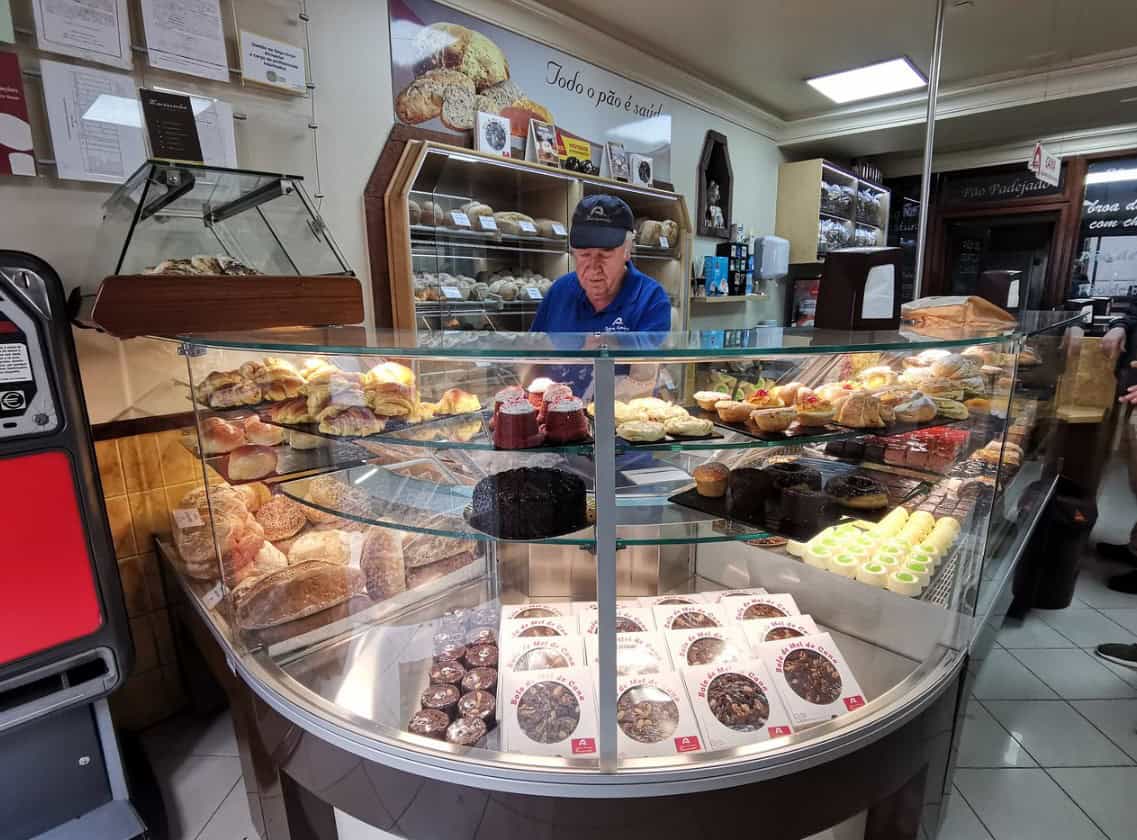
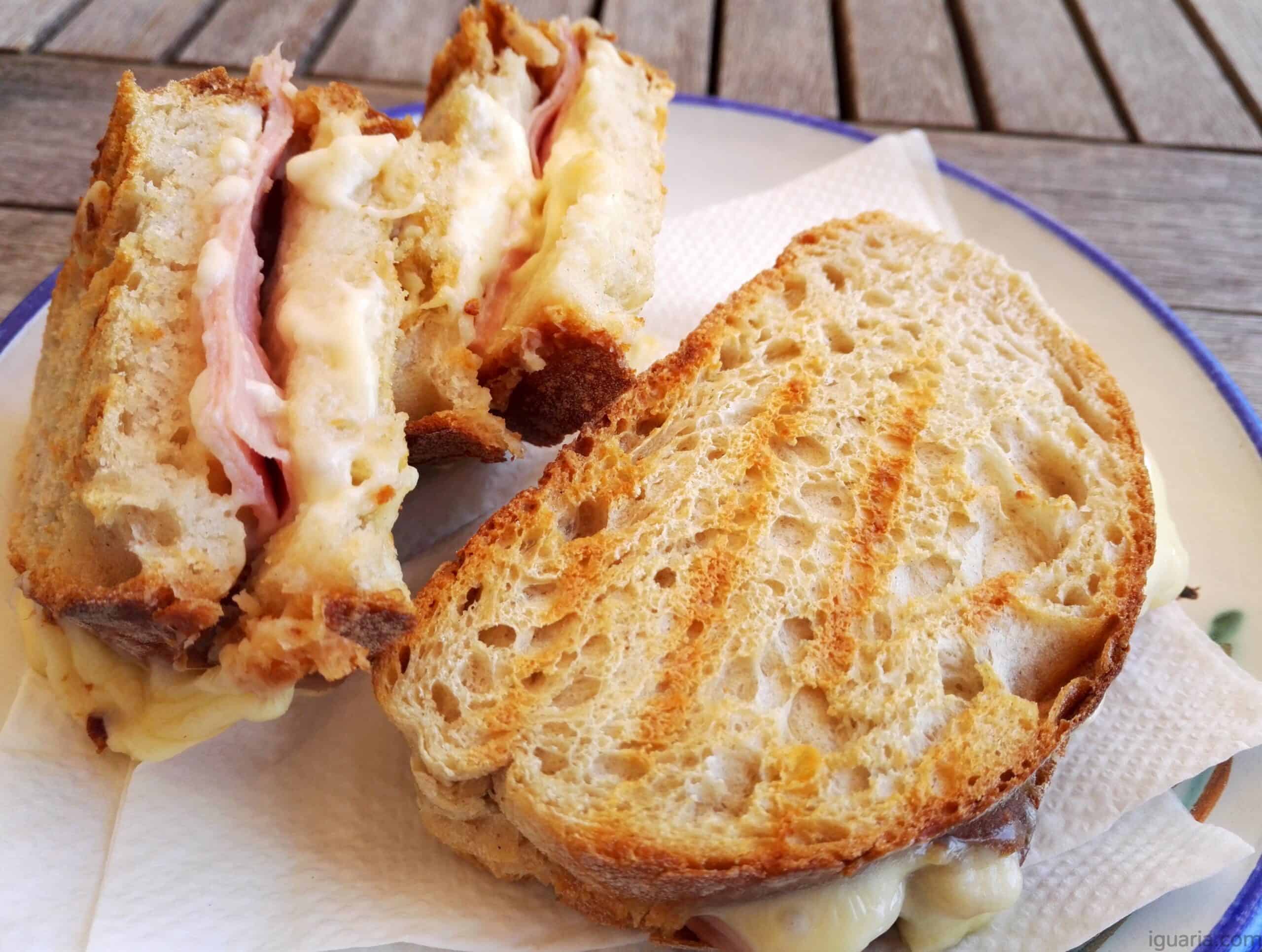 Contrary to popular belief, Madeira cake isn’t something that exists on Madeira. It was a British invention to give Victorians something to eat with their Madeira wine. The most famous cake on the island is actually called bolo de mel – made from a festive mix of molasses, cinnamon, cloves, allspice, almonds and walnuts. It’s traditionally made at home in early December in preparation for Christmas, but the demands of modern-day tourism mean you can buy it in gift shops all year around.
Contrary to popular belief, Madeira cake isn’t something that exists on Madeira. It was a British invention to give Victorians something to eat with their Madeira wine. The most famous cake on the island is actually called bolo de mel – made from a festive mix of molasses, cinnamon, cloves, allspice, almonds and walnuts. It’s traditionally made at home in early December in preparation for Christmas, but the demands of modern-day tourism mean you can buy it in gift shops all year around.
During the early settlement of the island, spices like cinnamon and cloves were new arrivals from Portugal’s Indian colonies. The Carreira da India was the recently discovered sea route from Lisbon to Goa, via the Cape of Good Hope. The return journey would bring Portuguese fleets into Funchal, where they’d restock their supplies before completing the final stage of their journey home. This influx of sea trade saw the introduction of spices from far-flung destinations, which Madeirans happily incorporated into their existing recipes, such as bolo rei, or king cake: a traditional Christmas treat in the vein of stollen or panettone, which has a broche-feel and a festive-mix of allspice and cinnamon.
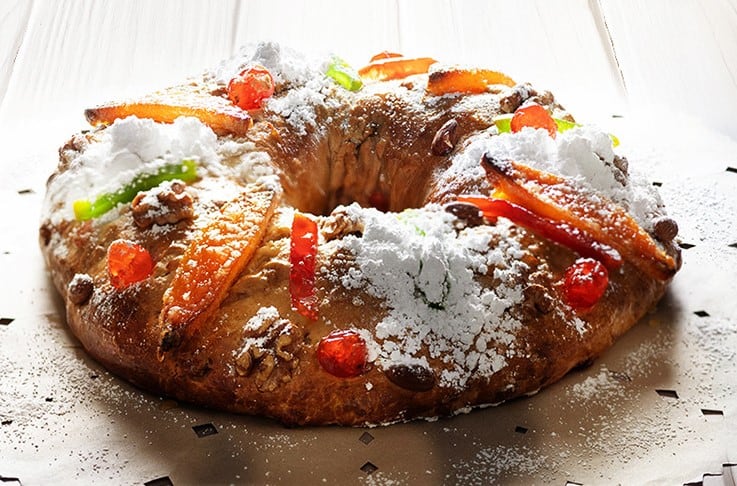
This new spice trade coincided with a huge agricultural success for the island. Sugar demanded a high price across Europe in the late 1500s and early 1600s – the island’s sugar cane crops were extremely lucrative and Madeira quickly became the world’s largest producer, thanks to it’s mild climate and an abundance of water. Water was also used to power the ‘engenhos’, which processed the raw cane and a second, parallel industry appeared: rum production. Engenhos sprang up all over the island – you can visit two modern-day examples in the towns of Porto da Cruz and Calheta.
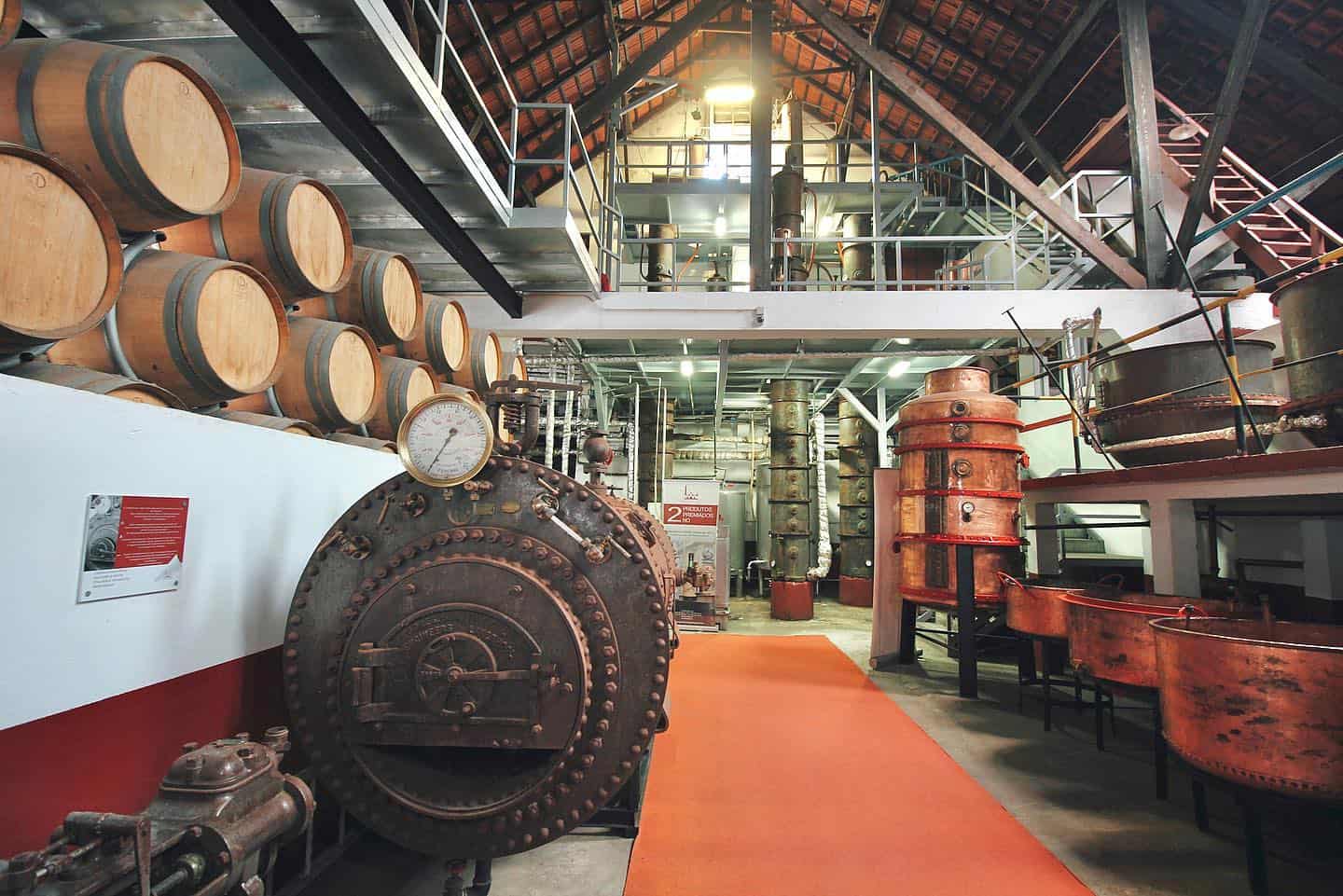 Rum is the main ingredient in Madeira’s most popular tipple: poncha. It’s a cocktail based on the Indian drink paanch which mixes arrack, lemon juice, sugar, spices and tea. With poncha, the arrack’s replaced with a generous portion of rum, which is then mixed with sugar, honey, and the rind and juice of a lemon. You’ll also find variations which substitute the lemon for tangerine, lime or passion fruit, but the traditional recipe is best. The final key ingredient is a ‘caralhinho’ or poncha stick – more for show than out of necessity, the poncha stick is used by bar tenders across the island, (with great panache and extreme violence), to pummel the ingredients into a delicious and deadly cocktail.
Rum is the main ingredient in Madeira’s most popular tipple: poncha. It’s a cocktail based on the Indian drink paanch which mixes arrack, lemon juice, sugar, spices and tea. With poncha, the arrack’s replaced with a generous portion of rum, which is then mixed with sugar, honey, and the rind and juice of a lemon. You’ll also find variations which substitute the lemon for tangerine, lime or passion fruit, but the traditional recipe is best. The final key ingredient is a ‘caralhinho’ or poncha stick – more for show than out of necessity, the poncha stick is used by bar tenders across the island, (with great panache and extreme violence), to pummel the ingredients into a delicious and deadly cocktail.
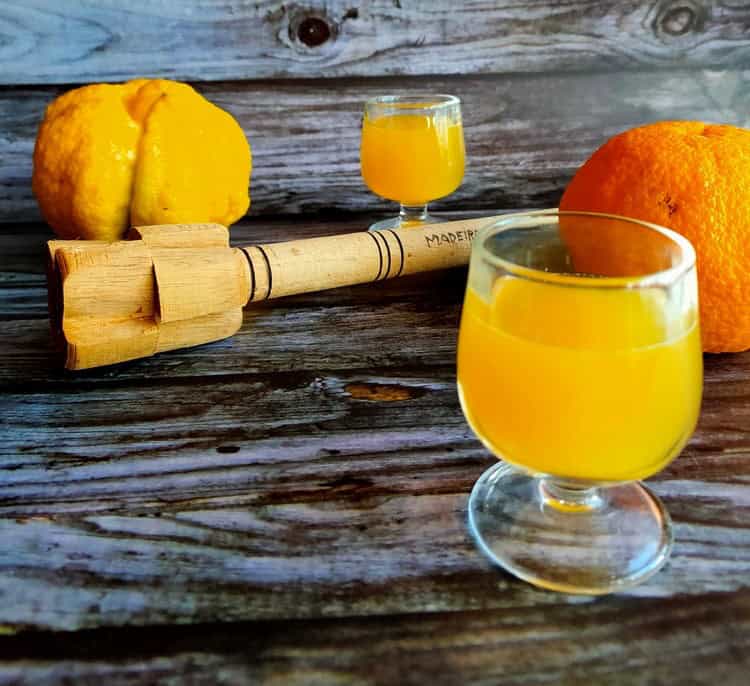
Both the rum and sugar production processes create molasses as a by-product. This sweet, sticky ingredient was included in the alms given to hospitals, misericordias and convents on the island – legend has it, the sisters of the Convento de Santa Clara in Funchal combined the spices and molasses to create bolo de mel (before their famous exodus to the Curral das Freiras). One very important etiquette tip with a bolo de mel: never cut the cake with a knife; it has to be torn into pieces by hand – just as the sisters distributed their cake to the needy from the steps of the convent four hundred years ago.
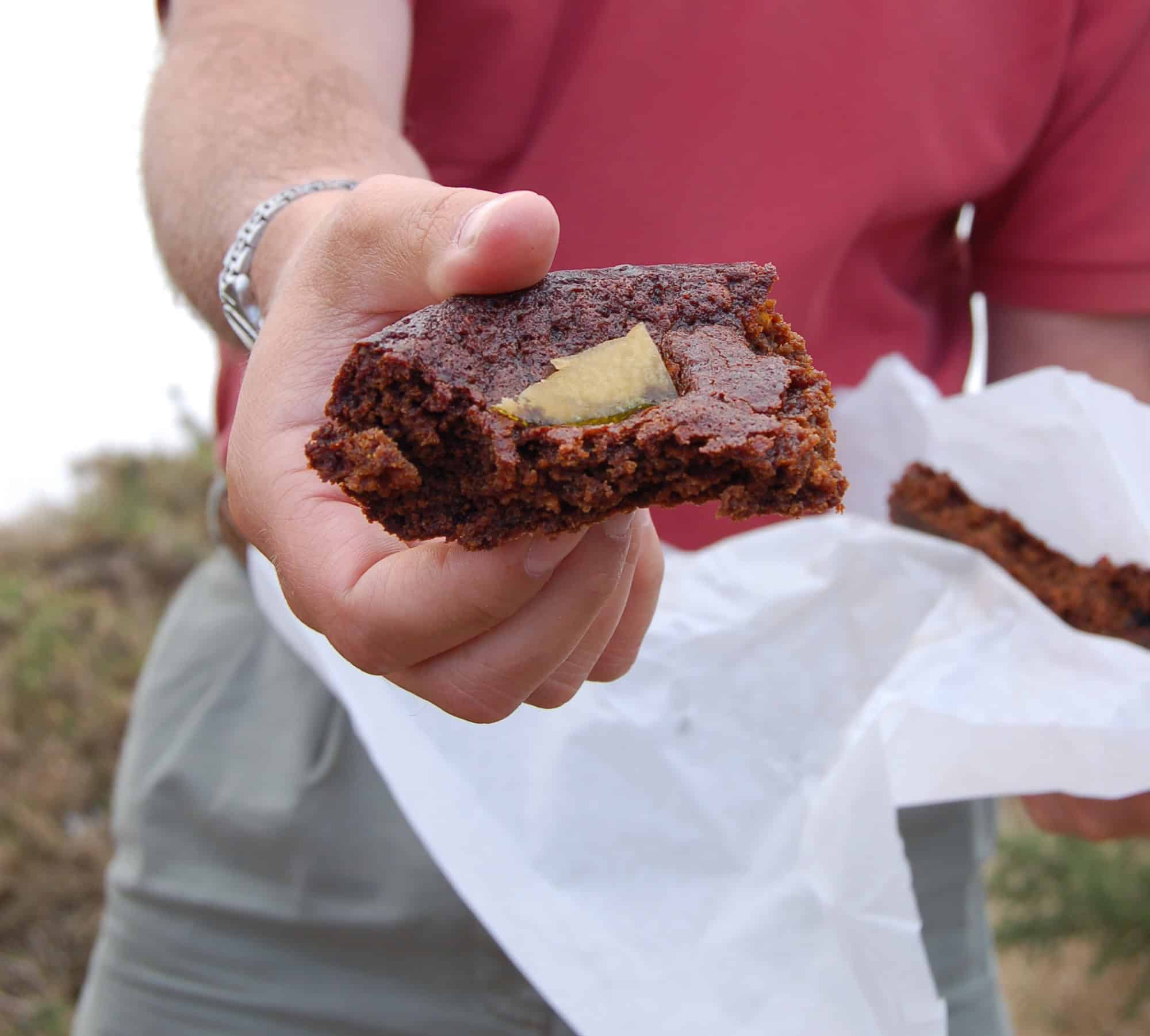
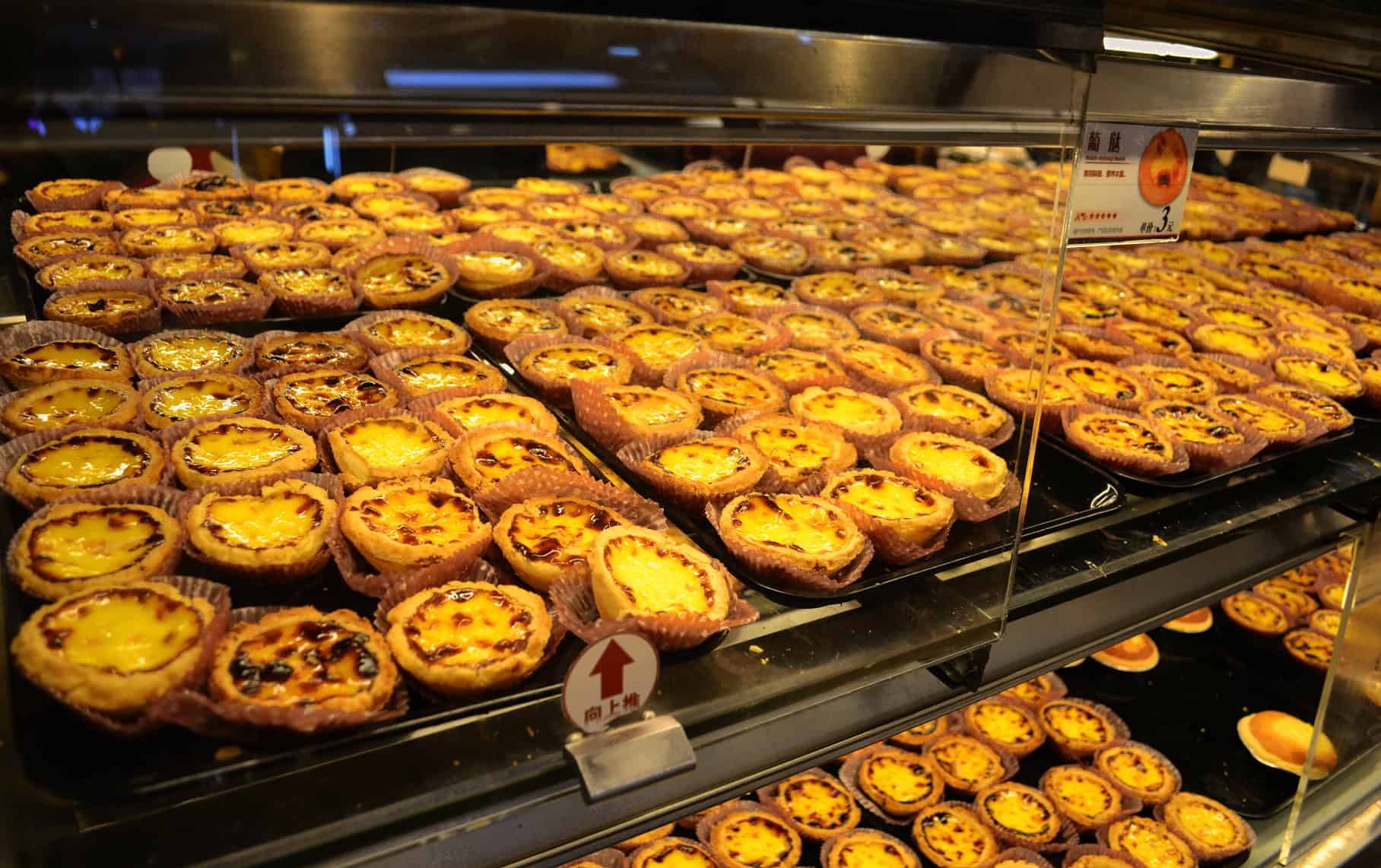 A more normal accompaniment to a morning coffee would be either a queijadas or a pastel de nata. You’re probably familiar with the latter – small baked custard tarts sprinkled with cinnamon. Queijadas are a similar bite-sized treat often taken with an expresso, and there are many, many variations right across Portugal. The basic ingredients are usually the same, eggs, sugar and fresh cheese – a Madeiran queijadas is usually a small parcel of slightly-proven dough, with the edges folded and the sweet cheese filling hidden inside. The cheese is often referred to as cottage cheese or ricotta which isn’t quite the case – Portuguese fresh cheese has a smooth consistency and is made from milk curd, whereas ricotta is made from whey. It’s also a dish in itself: queijo fresco is a common Portuguese starter, particularly in the Azores where it’s served with fresh bread and a spicey pimento moida sauce.
A more normal accompaniment to a morning coffee would be either a queijadas or a pastel de nata. You’re probably familiar with the latter – small baked custard tarts sprinkled with cinnamon. Queijadas are a similar bite-sized treat often taken with an expresso, and there are many, many variations right across Portugal. The basic ingredients are usually the same, eggs, sugar and fresh cheese – a Madeiran queijadas is usually a small parcel of slightly-proven dough, with the edges folded and the sweet cheese filling hidden inside. The cheese is often referred to as cottage cheese or ricotta which isn’t quite the case – Portuguese fresh cheese has a smooth consistency and is made from milk curd, whereas ricotta is made from whey. It’s also a dish in itself: queijo fresco is a common Portuguese starter, particularly in the Azores where it’s served with fresh bread and a spicey pimento moida sauce.
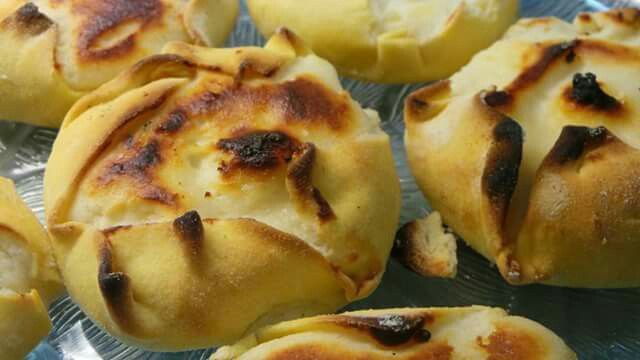
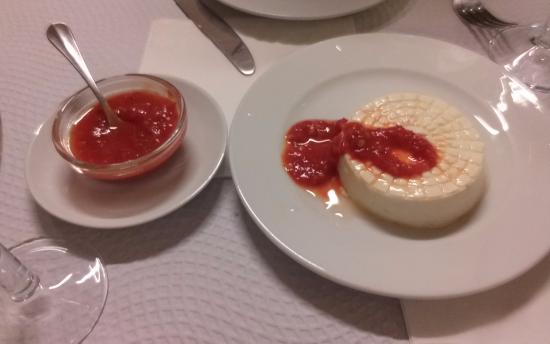
One of the sweetest treats of all is a malassada: best described as a flattened lemon doughnut, deep-fried and drizzled with mel de cana (sugar cane honey). If you prefer to dial-back the sugar a little, bolo do arroz are American-style lemon muffins, made with rice flour to give a crunchy top and light interior.
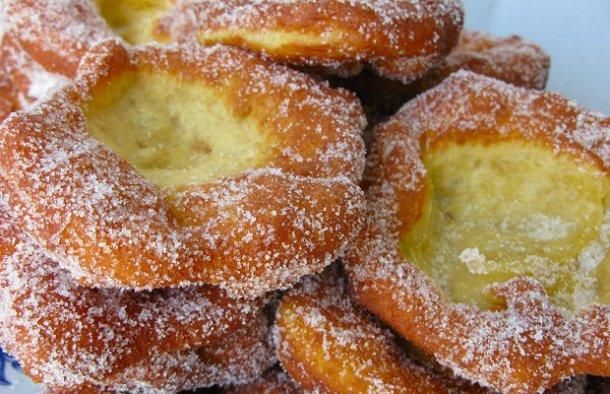
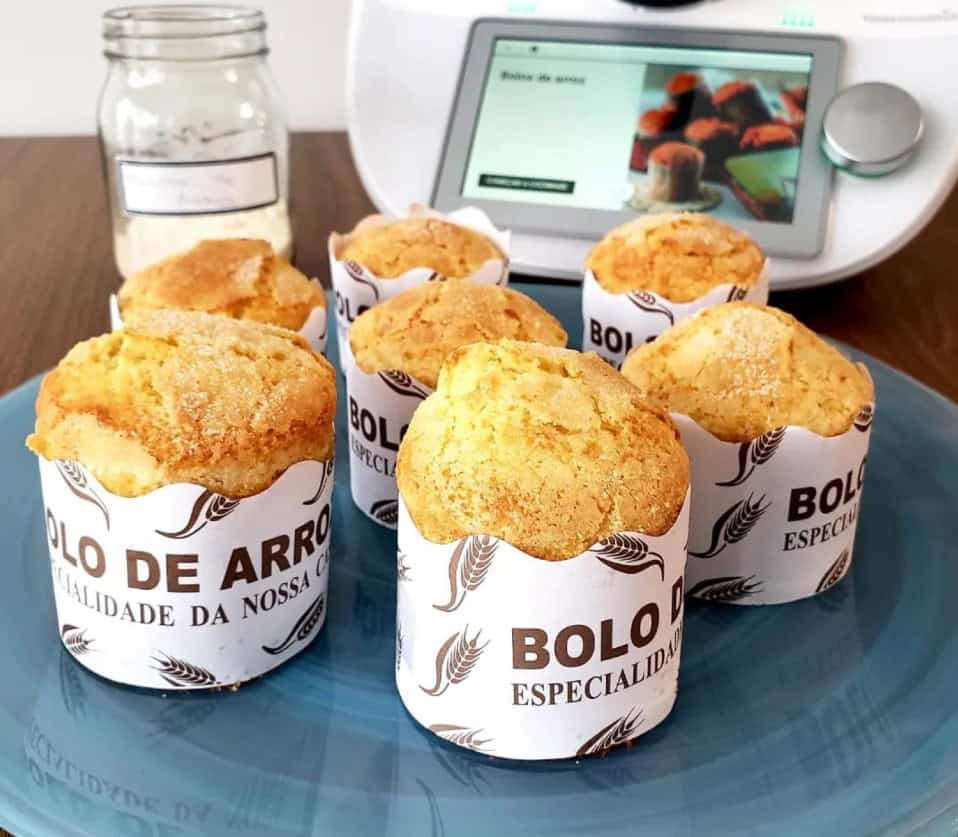
Moving away from the padarias, your next stop is the Zona Velha Old Town district. Funchal was born here: this was the location of the original 15th century settlement which became the modern-day capital – the Chapel of Corpo Santo at the Zona’s eastern-end dates back to this period. The narrow streets of this once-dilapidated area of the city have found new life – it’s abandoned fishermans’ cottages and ramshackle merchant houses are now home to a huge range of restaurants and café bars. This was helped in no small part by the Arte Portas Abertas, a project which invited local artists, painters, sculptors and photographers to breathe new life into Funchal’s derelict buildings, and bring art into the everyday lives of the city’s population. Their works adorn the Old Town’s doors, facades and frontages, creating a unique open-air art gallery.
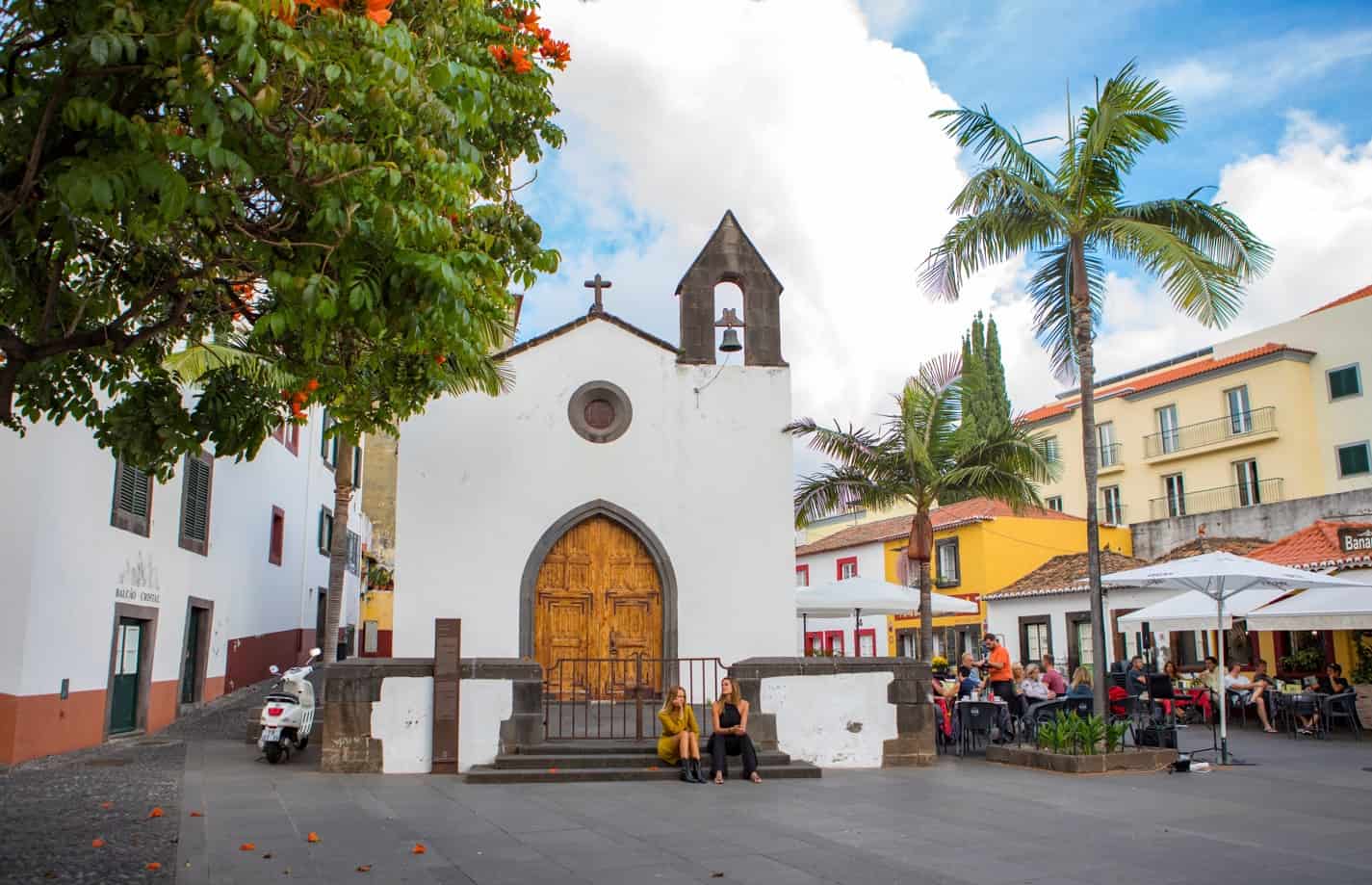
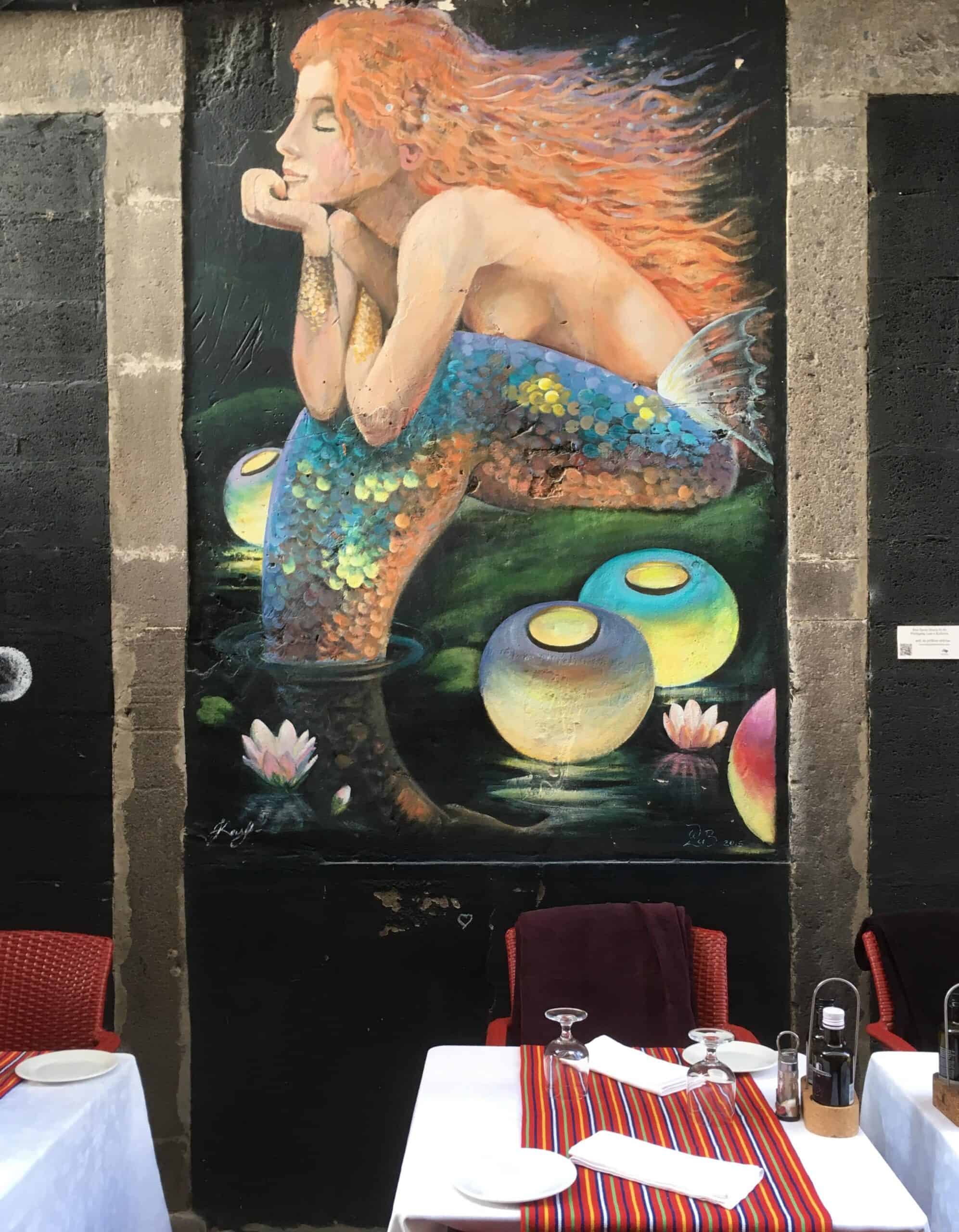 The Rua de Santa Maria runs the length of the Old Town, and in the evening this narrow street vanishes under restaurant parasols and human traffic, transformed into a mile-long frenetic alfresco restaurant. The high concentration of food outlets forces restaurateurs to work hard to attract local custom, and to make their menus stand out from the crowd. You’ll see the ingredients from your visit Mercado dos Lavradores put to good use, with many of the island’s best chefs producing imaginative dishes which allow their seasonal, locally-sourced ingredients to shine.
The Rua de Santa Maria runs the length of the Old Town, and in the evening this narrow street vanishes under restaurant parasols and human traffic, transformed into a mile-long frenetic alfresco restaurant. The high concentration of food outlets forces restaurateurs to work hard to attract local custom, and to make their menus stand out from the crowd. You’ll see the ingredients from your visit Mercado dos Lavradores put to good use, with many of the island’s best chefs producing imaginative dishes which allow their seasonal, locally-sourced ingredients to shine.
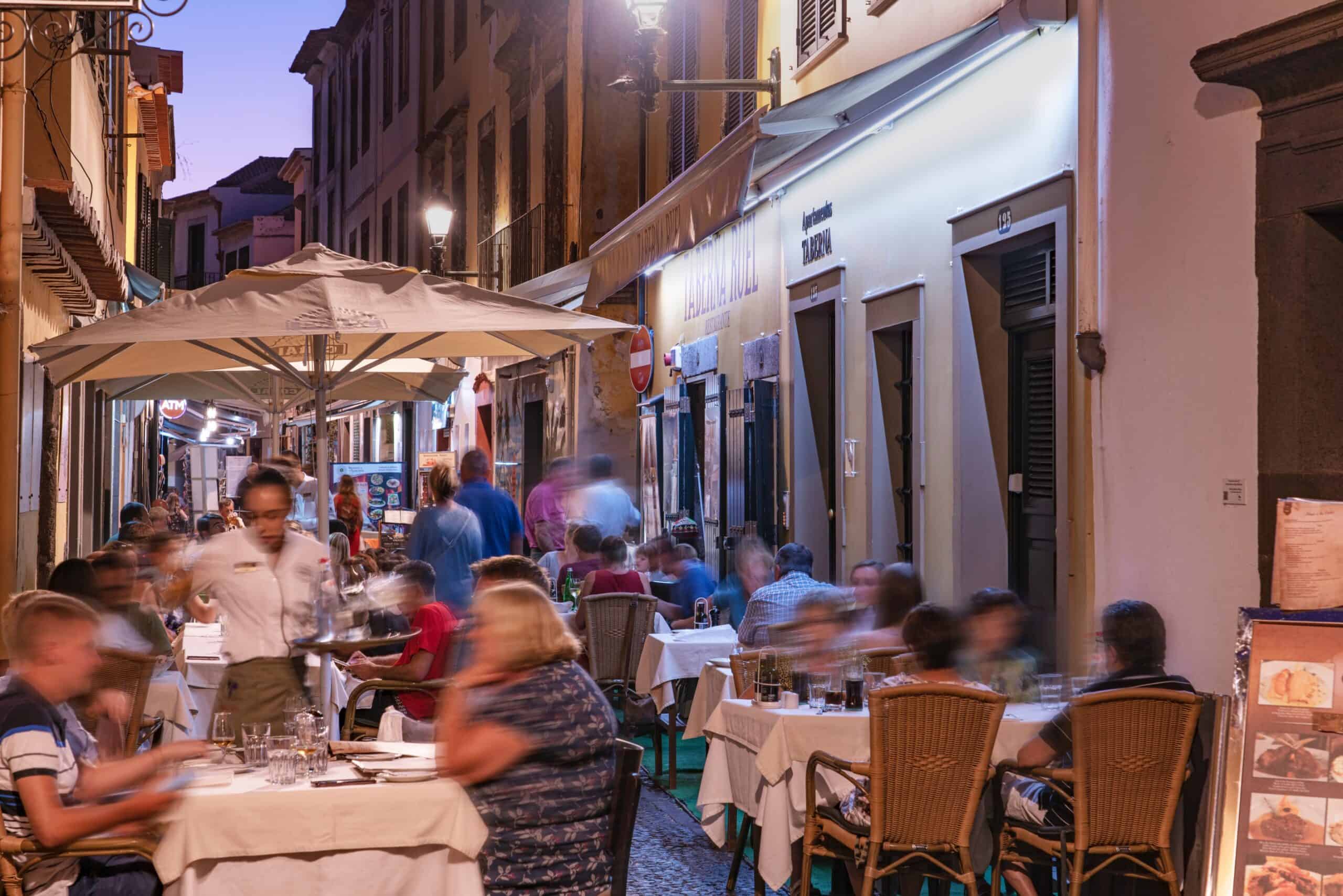 The owners of the Old Town’s wine bars are always happy to provide a crash course on Madeiran wines. Like the banana groves, the island’s vineyards come in all shapes and sizes: from the dedicated producers in the parishes of Camara de Lobos and Calheta, to the independent farmers whose vines compete for space with fruit trees and root vegetables.
The owners of the Old Town’s wine bars are always happy to provide a crash course on Madeiran wines. Like the banana groves, the island’s vineyards come in all shapes and sizes: from the dedicated producers in the parishes of Camara de Lobos and Calheta, to the independent farmers whose vines compete for space with fruit trees and root vegetables.
Madeiran vines are typically grown using a ‘latada’ – a lattice work of bamboo or local laurel, which is constructed like a giant pergola and stretches across the whole of the vineyard. The vines are trained along the branches of the latada, sitting around a metre off the floor. This provides maximum exposure to the sun’s rays above, whilst keeping the nutrient-rich soil shaded below to help retain moisture. You can see this technique close-up on our vineyards tours to Quinta do Barbusano in Sao Vicente, where owner Tito Brazao uses the latada to great effect across his fifteen-acre terraced vineyard. If you’re visiting the island in August, the Festa do Vinho celebrates the start of the wine harvest. It begins with a ceremonial pressing of the first grapes in the centre of Camara de Lobos and continues with a month-long celebration of the island’s viticulture, with live music and culinary events across central Funchal.
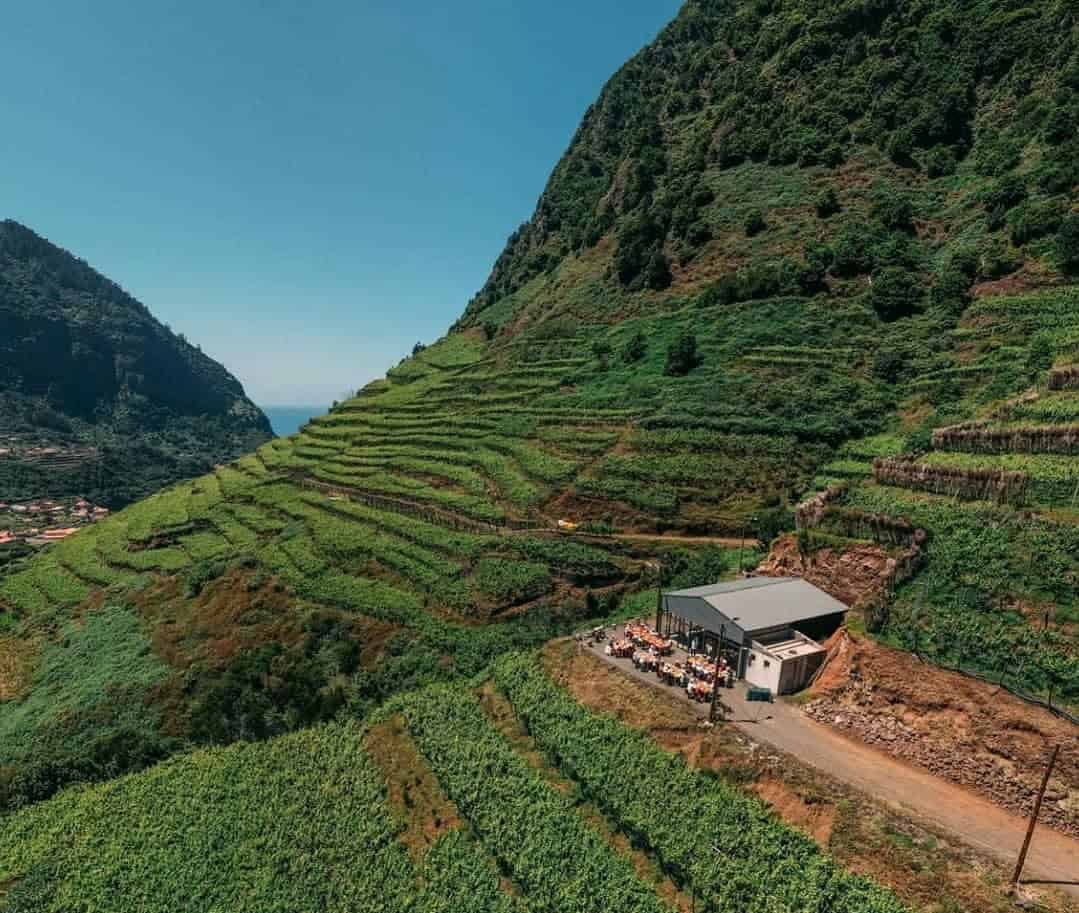
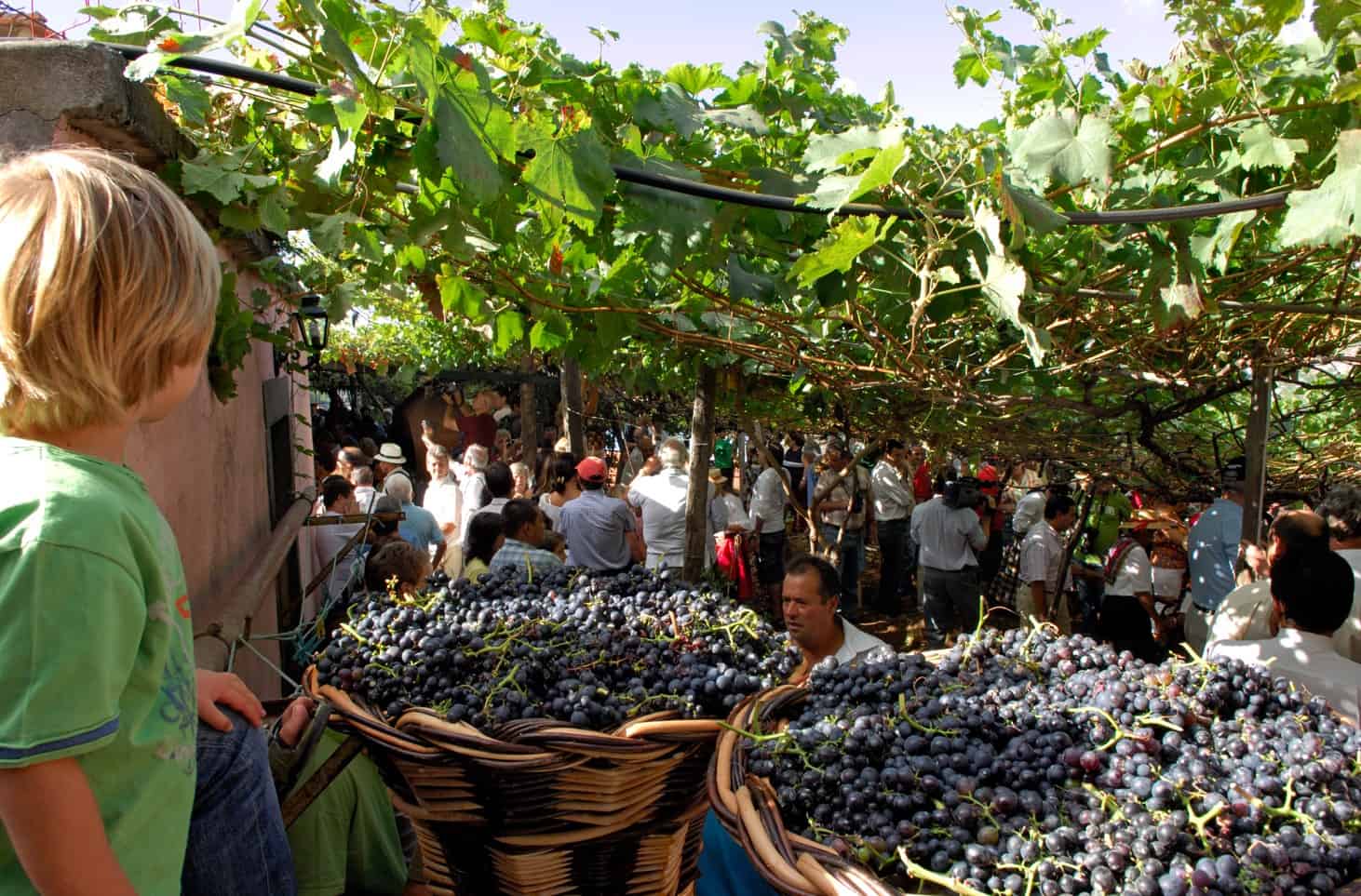 There’s also an important distinction to make: fortified ‘Madeira Wine’ is a product in itself but the island’s vineyards also produce ‘regular’ table wines. With table wines, the local supermarket shelves tend to be dominated by the larger wine producing regions of mainland Portugal: Douro, Dao and Alentejo. When ordering a bottle at dinner, you’ll usually see the wines’ origins displayed, but Madeiran producers and varieties to look out for are: Blandy’s, Colombo, Xavelha, Seical, Terras do Avo and the aforementioned Quinta do Barbusano.
There’s also an important distinction to make: fortified ‘Madeira Wine’ is a product in itself but the island’s vineyards also produce ‘regular’ table wines. With table wines, the local supermarket shelves tend to be dominated by the larger wine producing regions of mainland Portugal: Douro, Dao and Alentejo. When ordering a bottle at dinner, you’ll usually see the wines’ origins displayed, but Madeiran producers and varieties to look out for are: Blandy’s, Colombo, Xavelha, Seical, Terras do Avo and the aforementioned Quinta do Barbusano.
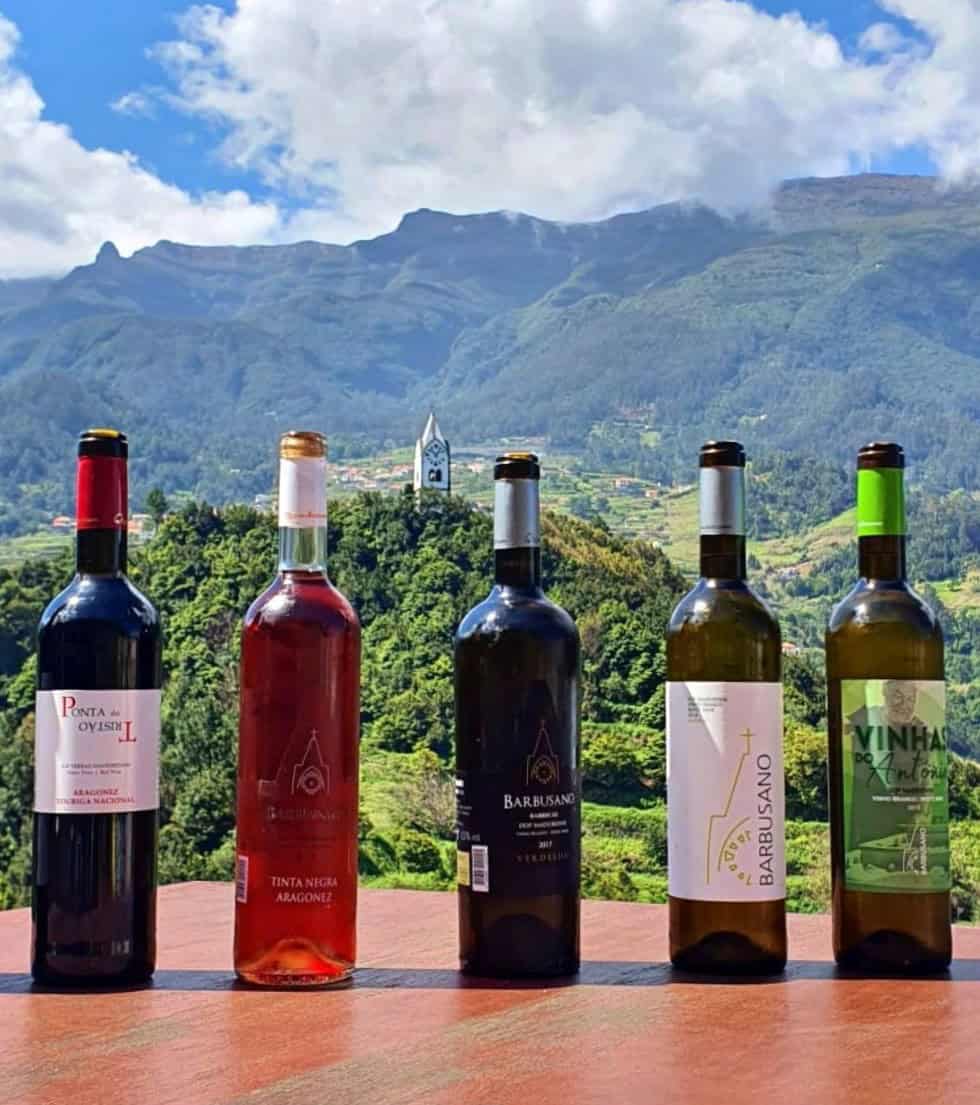
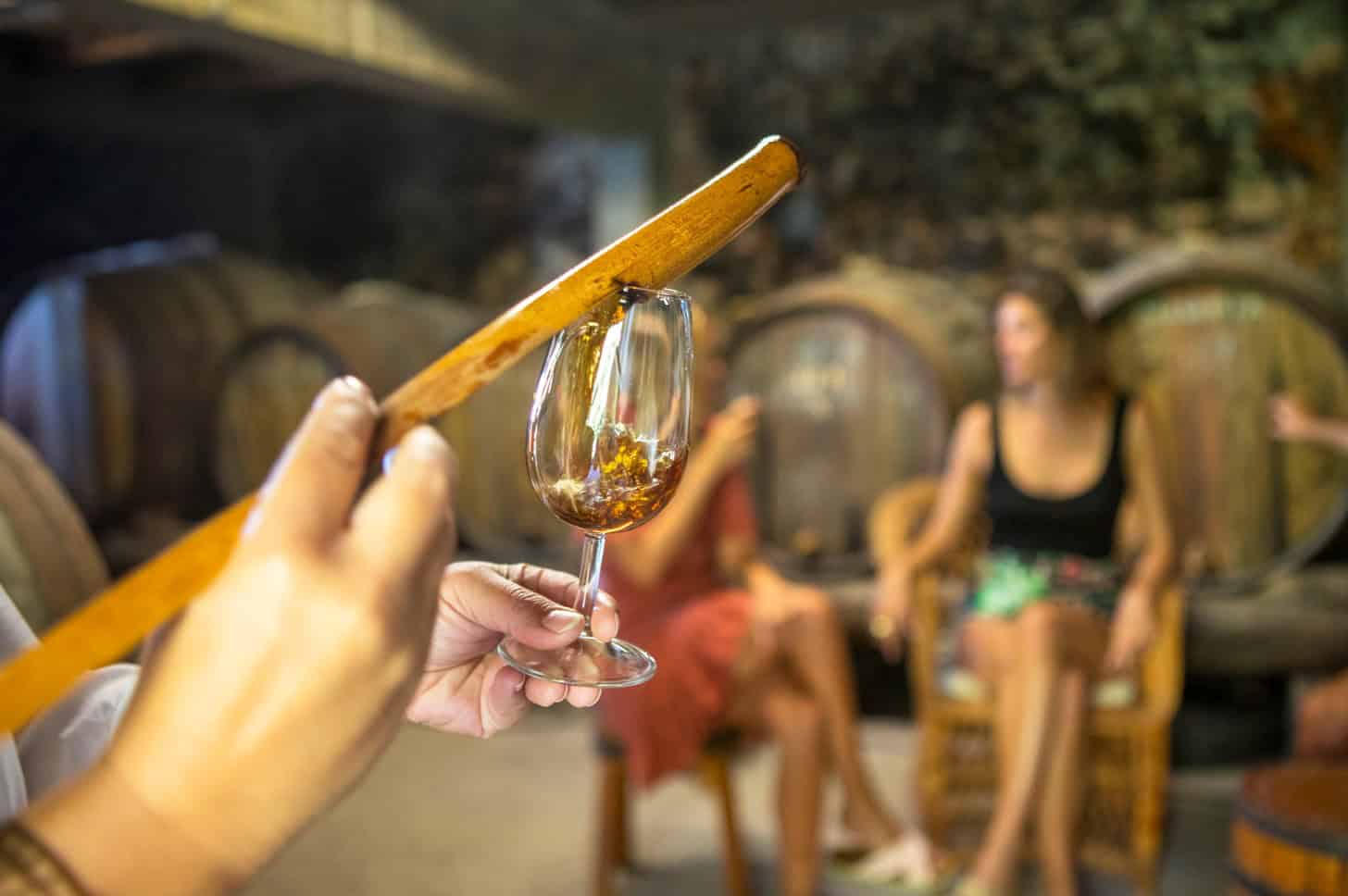 Fortified Madeira wine is a more complicated affair. Similar to it’s cousin port wine, Madeira wine evolved from attempts to preserve casks during long sea journeys through the addition of aquardente (sugar cane spirit). Legend has it, an unsold shipment of table wine returned along the Carreira da India, and a lucky combination of warm climes and the movement of the boat produced something entirely new. Modern-day Madeira wines are produced in stainless steel tanks with a closely controlled temperature. As the natural sugars from the grapes turn to alcohol, the winemaker will stop the fermentation process by adding an alcoholic spirit. The point at which fermentation is stopped all depends on the type of wine being produced and the sweetness/dryness the winemaker is aiming for.
Fortified Madeira wine is a more complicated affair. Similar to it’s cousin port wine, Madeira wine evolved from attempts to preserve casks during long sea journeys through the addition of aquardente (sugar cane spirit). Legend has it, an unsold shipment of table wine returned along the Carreira da India, and a lucky combination of warm climes and the movement of the boat produced something entirely new. Modern-day Madeira wines are produced in stainless steel tanks with a closely controlled temperature. As the natural sugars from the grapes turn to alcohol, the winemaker will stop the fermentation process by adding an alcoholic spirit. The point at which fermentation is stopped all depends on the type of wine being produced and the sweetness/dryness the winemaker is aiming for.
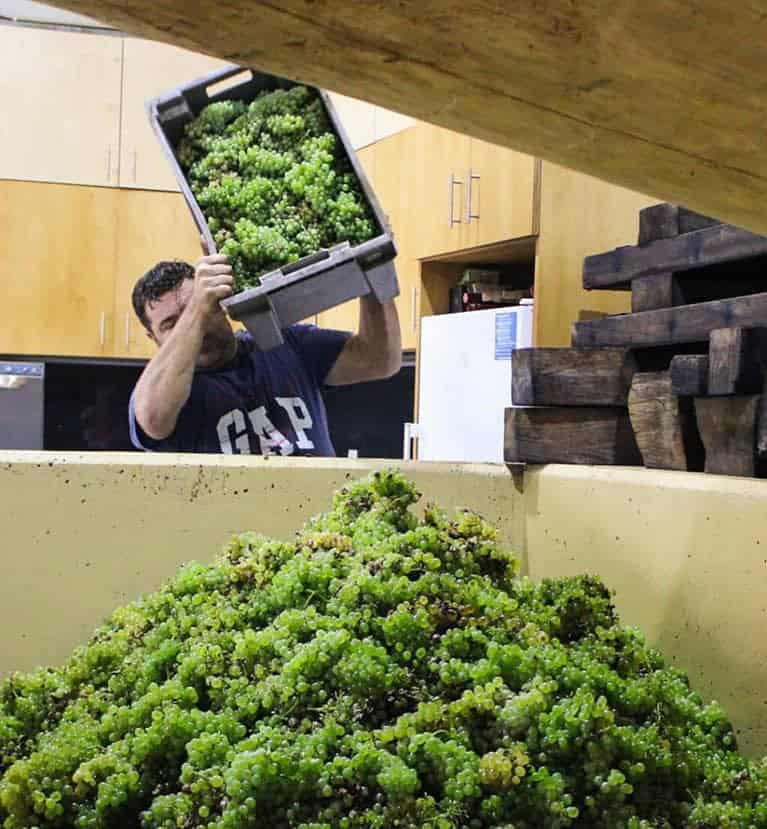
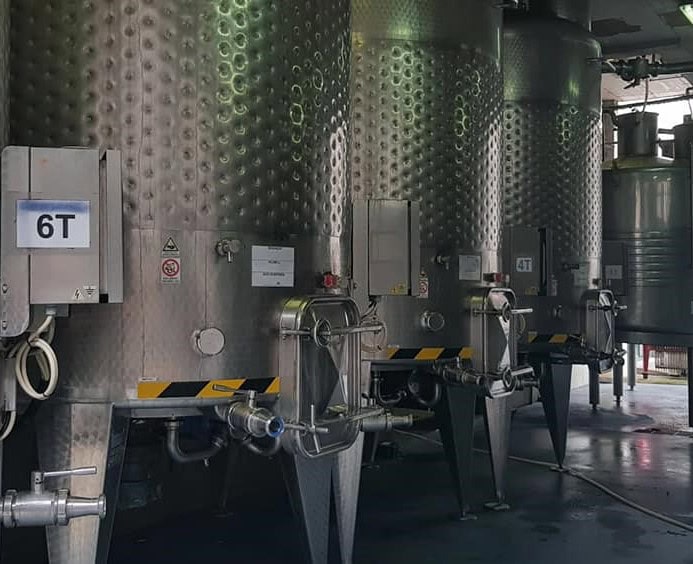
The wine is filtered, then fortified using a wine alcohol (the use of aquardente was banned in the mid-sixties), before being heated to a temperature of around 45 ⁰C where it sits three-to-four months. It’s then left to cool for a further month – at which point, the winemaker will designate different quantities of wine to be aged in large wooden vats. During this aging process, the remaining sugars, alcohol and natural acids in the wine will develop and evolve in flavour. The wooden vats aren’t hermetically-sealed, which is crucial – oxygen reacts with the amino acids and proteins in the wine, which helps it stabilise over a ten year period. Unlike port wine, this slow oxidation means Madeira wine doesn’t go off after opening.
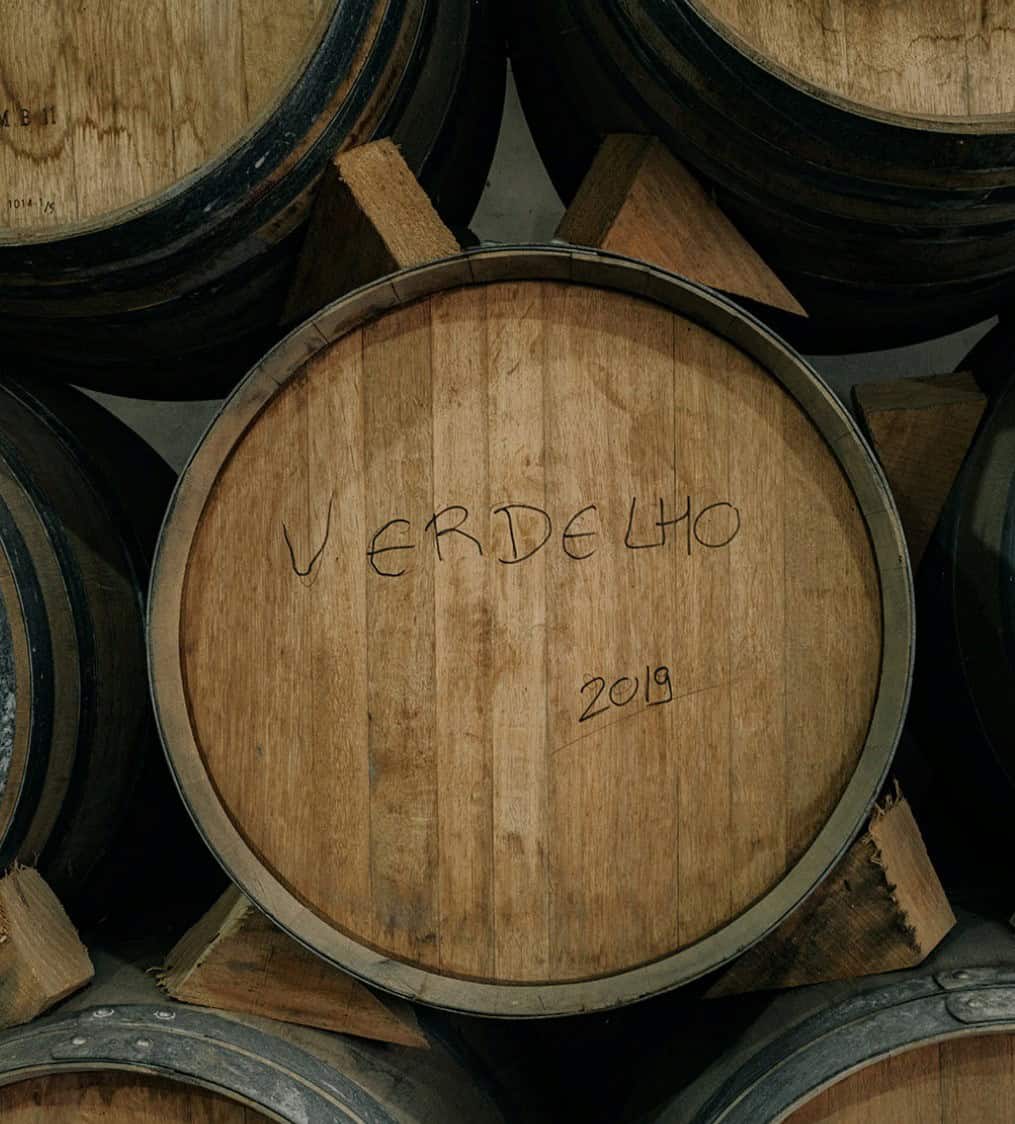
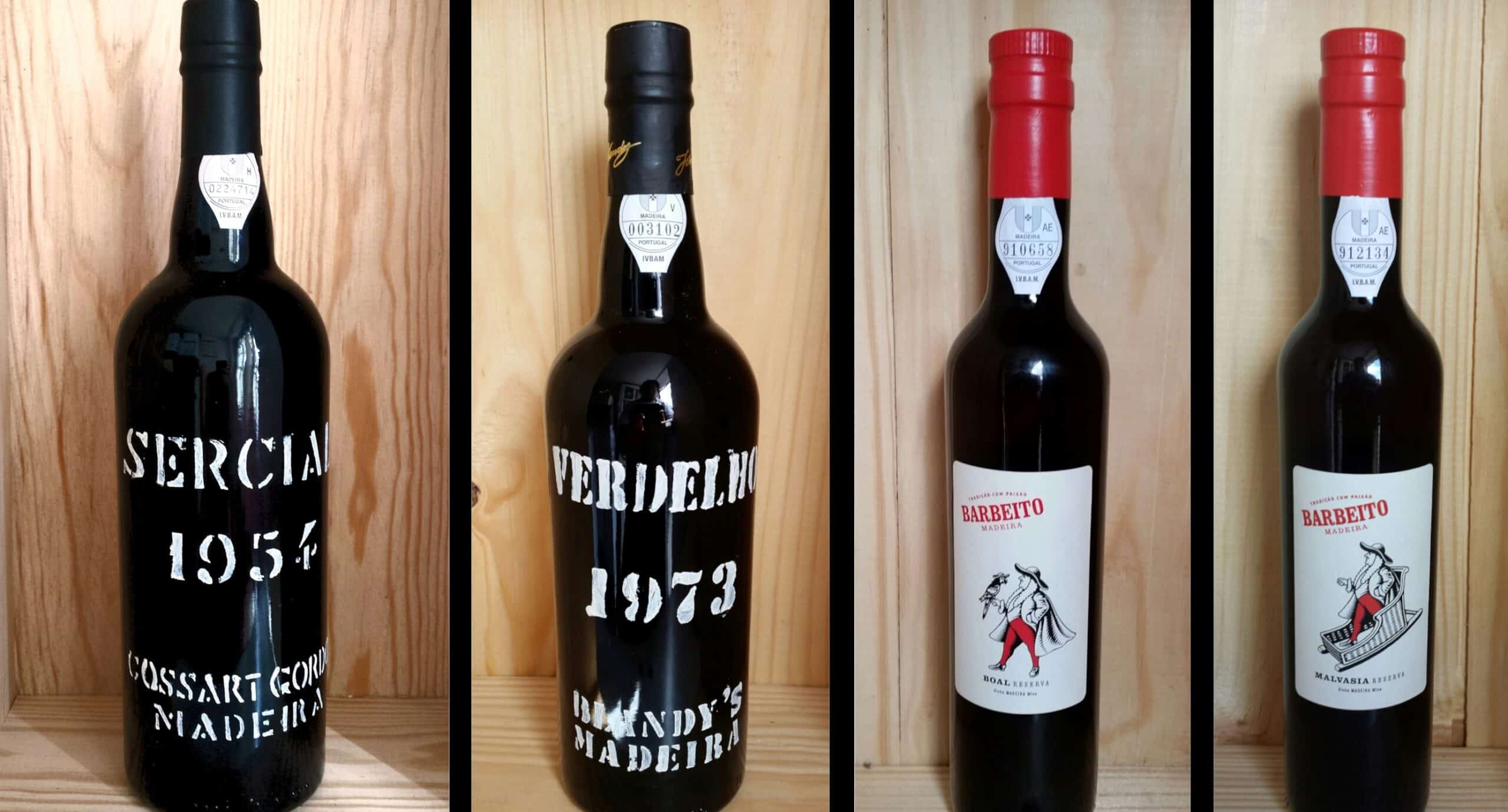
There are four main styles of Madeira wine: Sercial, Verdelho, Boal and Malvazia.
Sercial is the driest – it has a pale colour and quite a light aroma. Due to the high acidity of the grapes, sercial requires the longest period to mature. It has a fresh, citrus flavour which works well as an aperitif – very young sercials are occasionally served as a table wine with seafood.
Verdelho is medium-sweet – it has a slightly deeper, more golden colour than sercial; closer to the colour of honey with a taste to match. Verdelhos tend to become drier with age and their citrus elements intensify. Great as an aperitif once again and often taken as a mid-afternoon pick-me-up by Madeira’s older generation.
Bual is a dark and sweet – also spelt ‘Boal’, it has a rich, intense flavour. A good bual has a deep syrupy taste without being cloying – it’s very much a dessert wine, best enjoyed on it’s own.
Malvazia is the Madeira wine most people have tasted – also known as Malmsey, a good bottle tastes similar to (and moderately lighter than) a bual, often with a hint of vanilla. As it matures, it darkens to a more bual-like colour, with shades of coffee and chocolate creeping into the flavour.
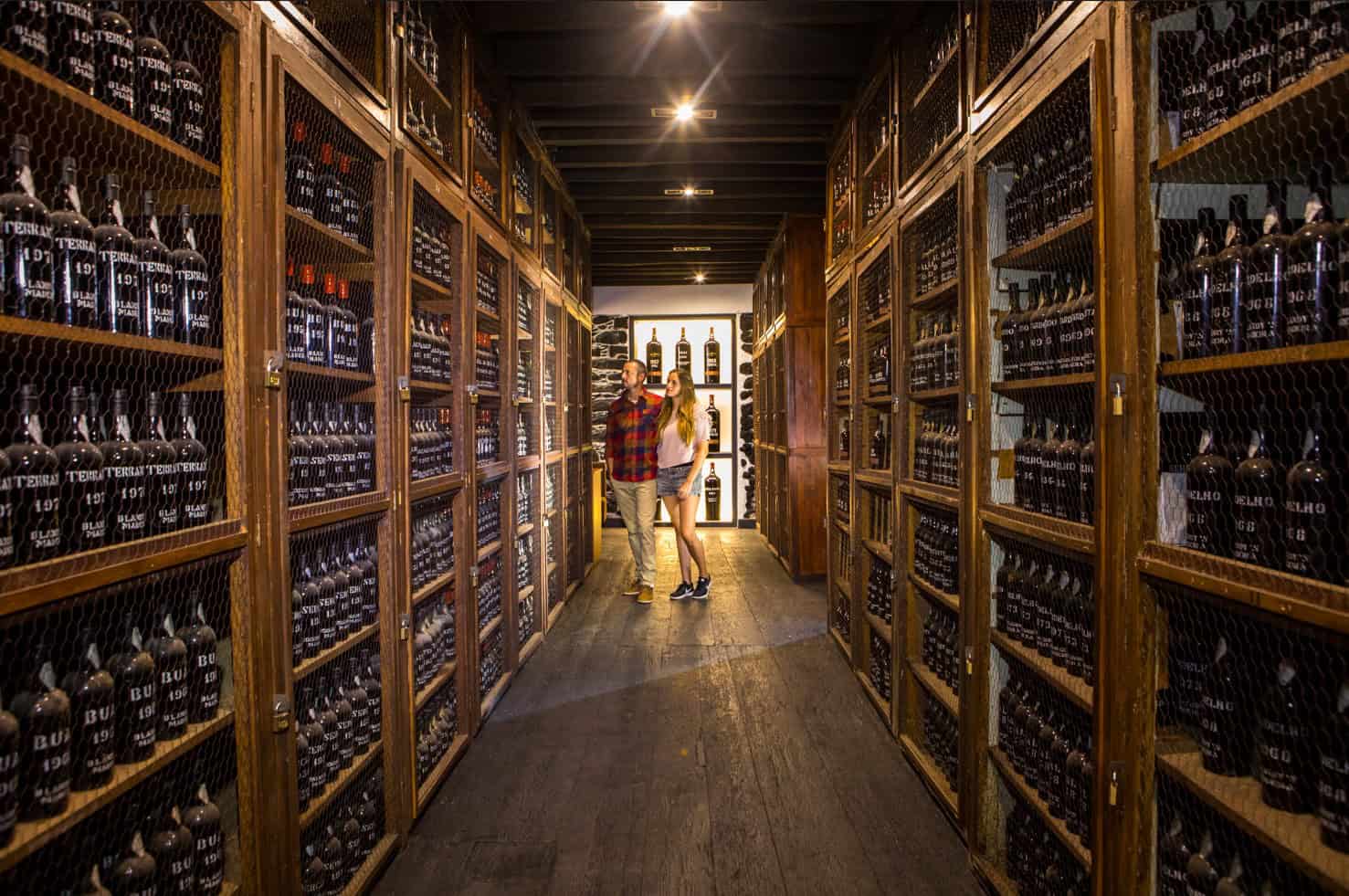
Now you’re ready to enjoy the best food and drink Madeira has to offer, and don’t forget to checkout our handy online guides to our favourite restaurants across the island.
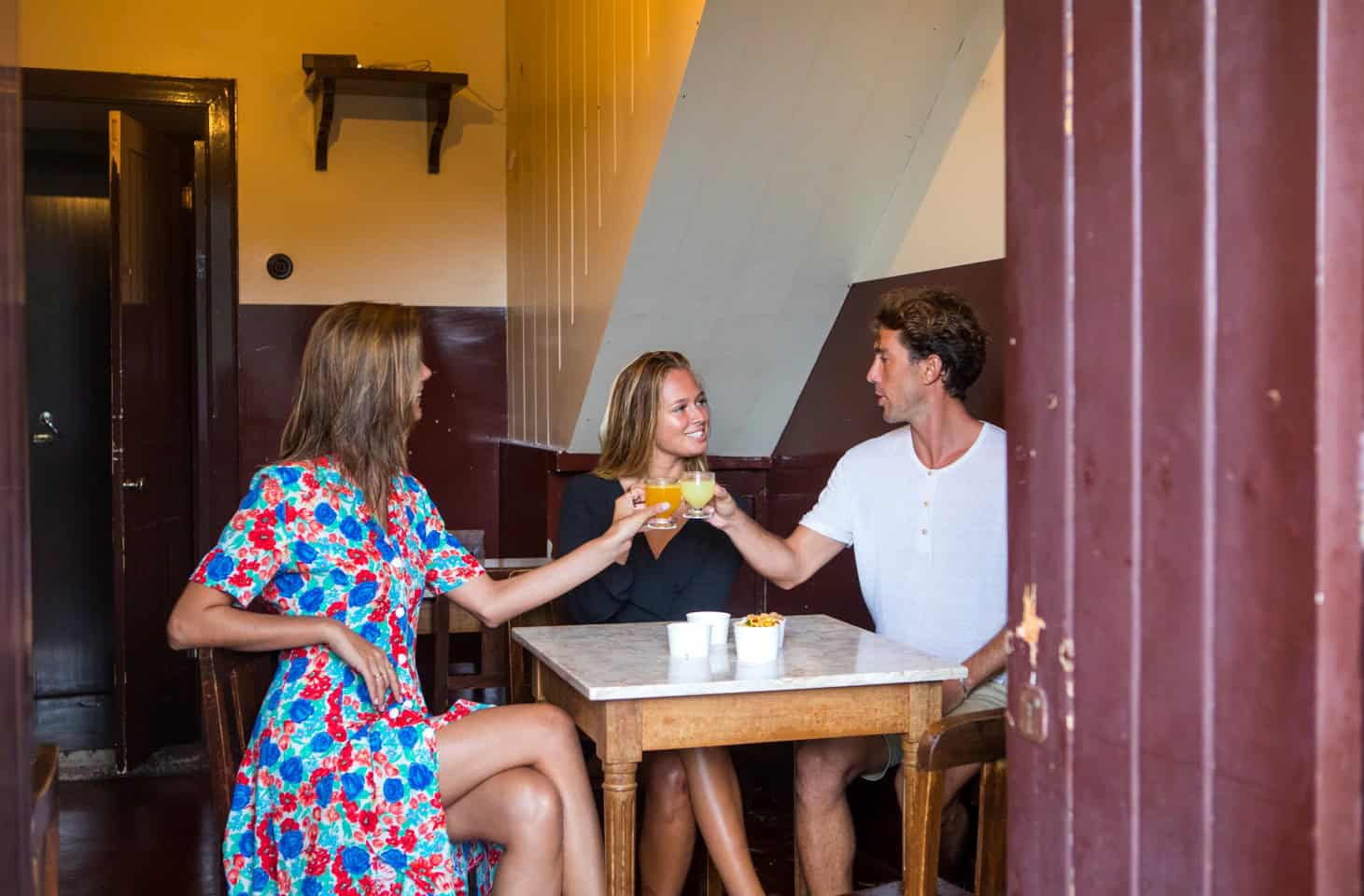



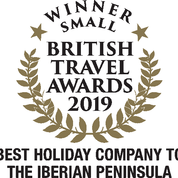





Follow us online